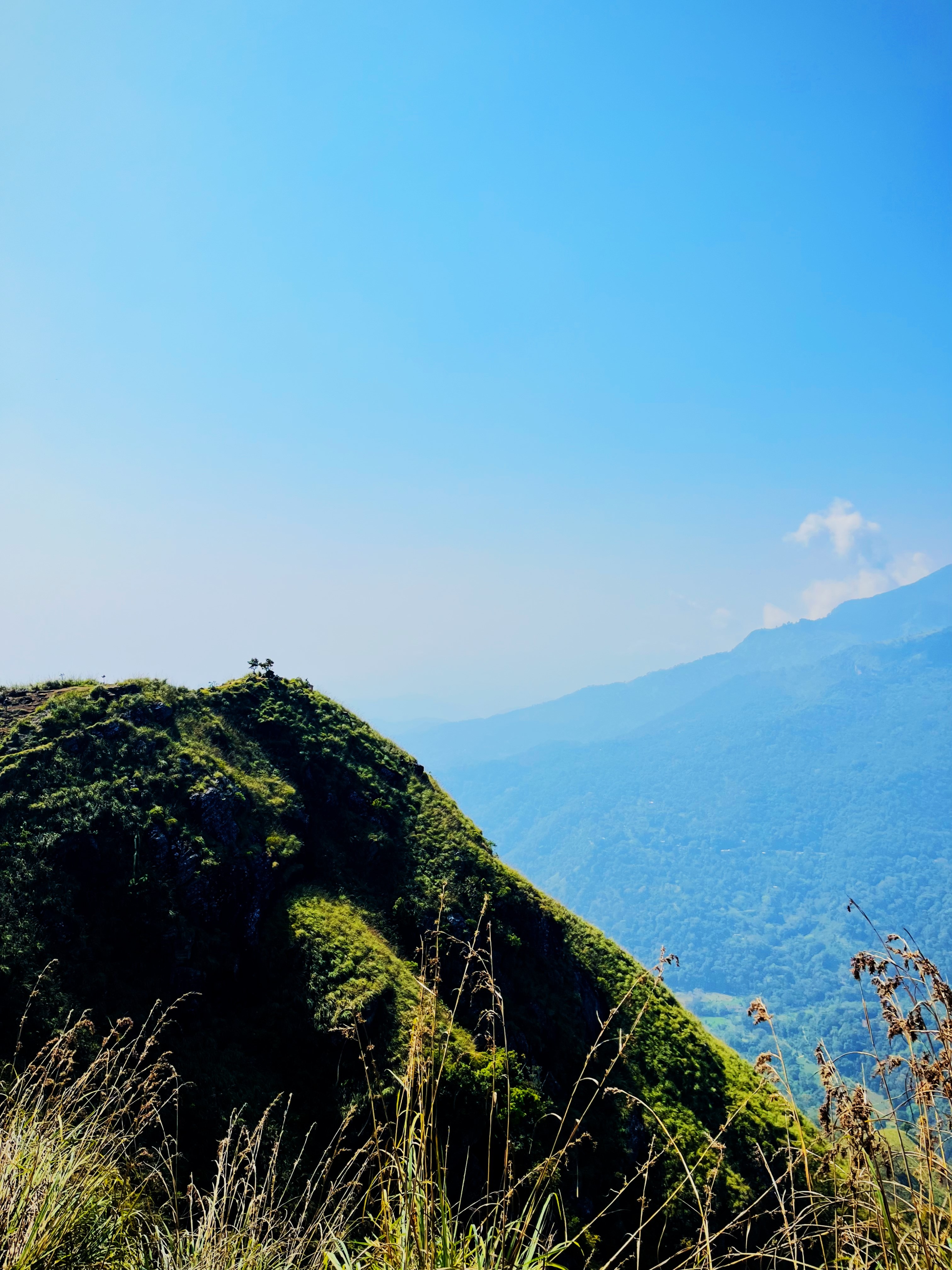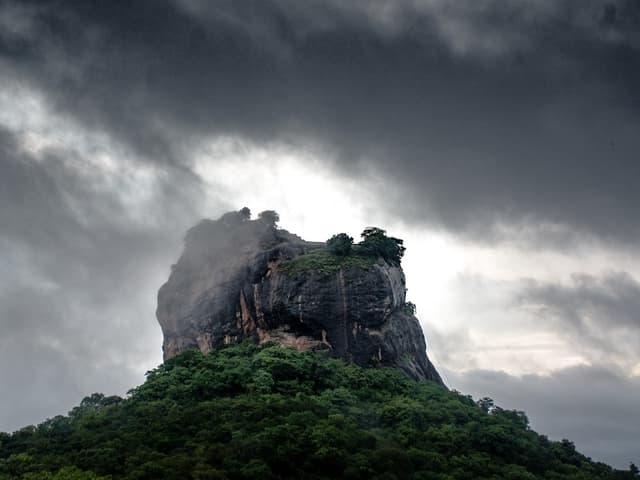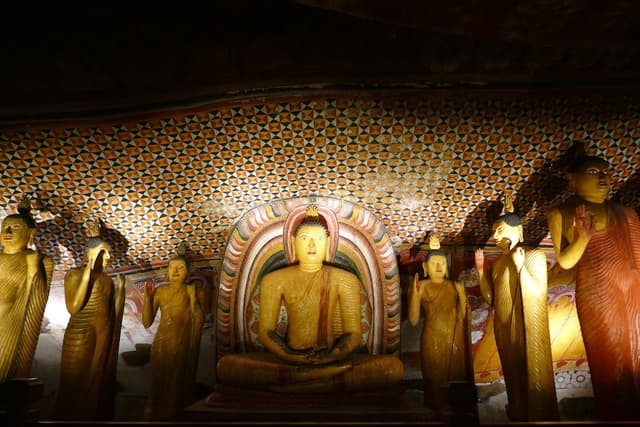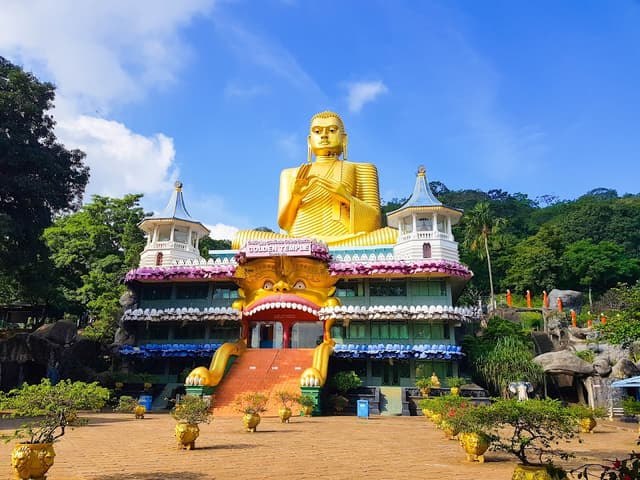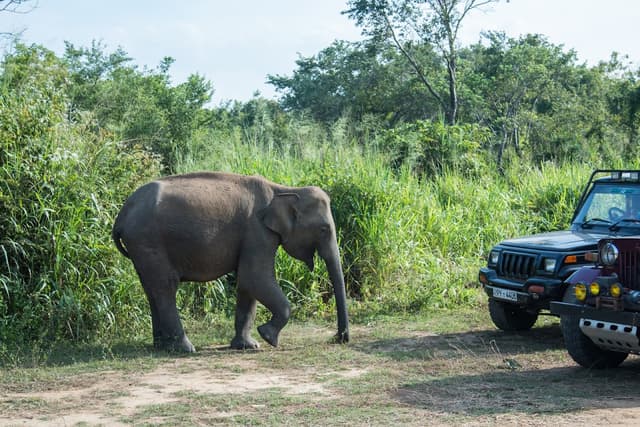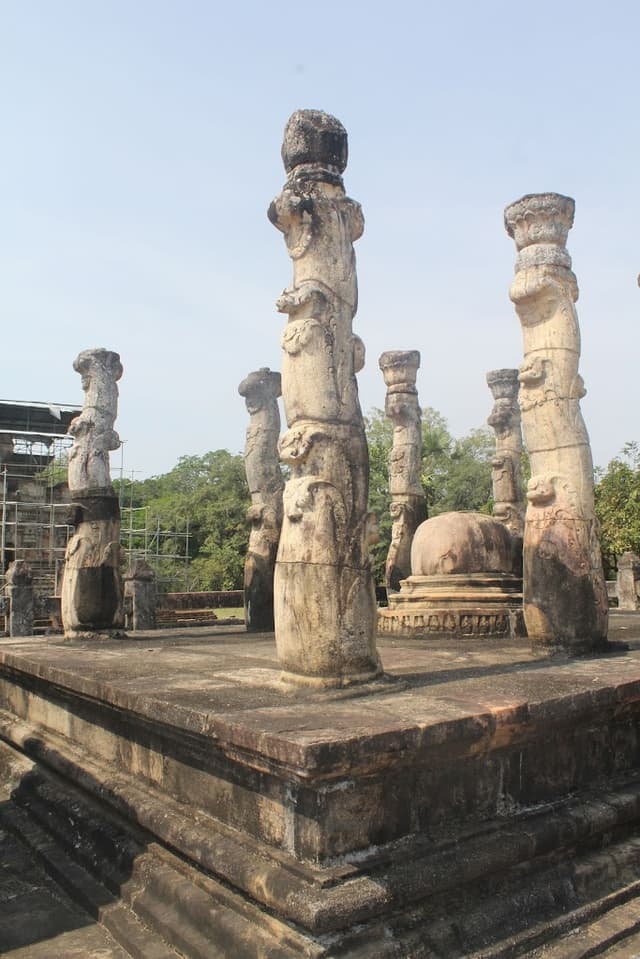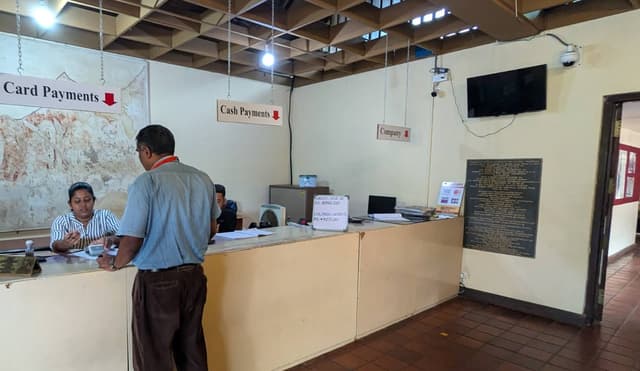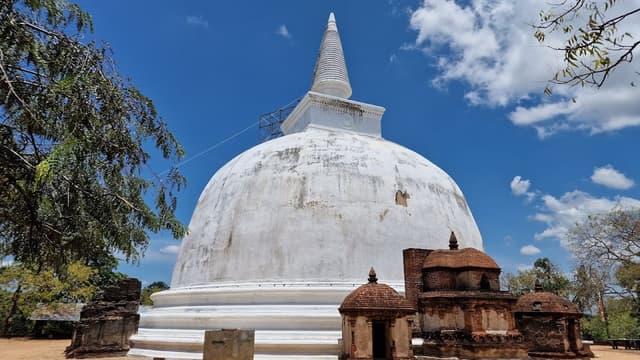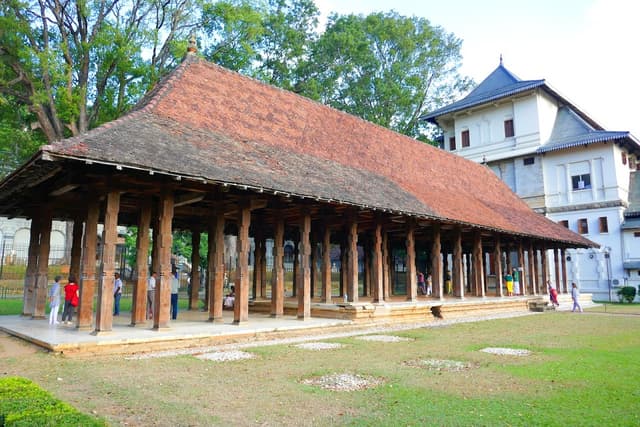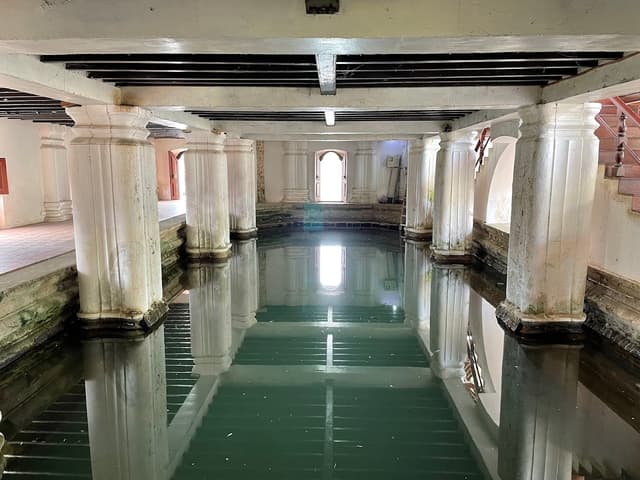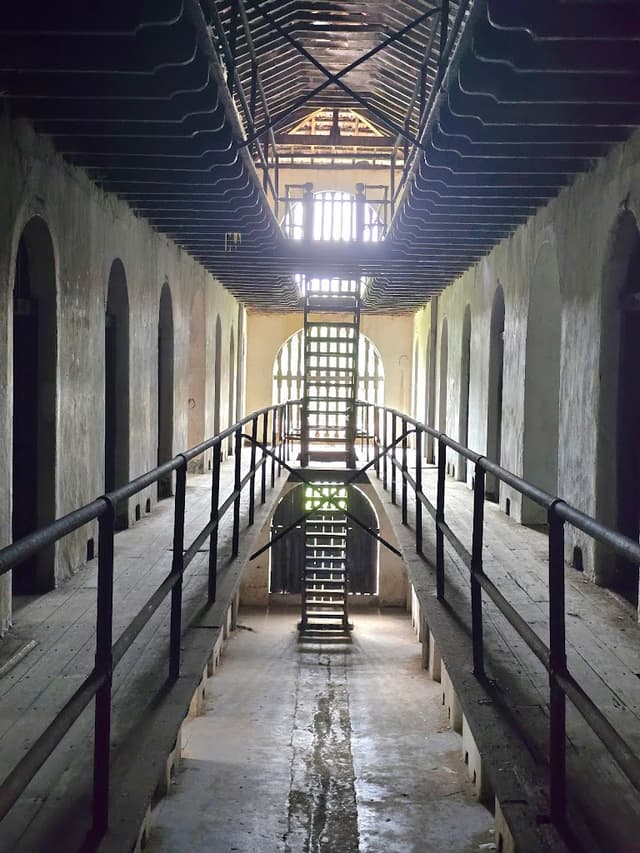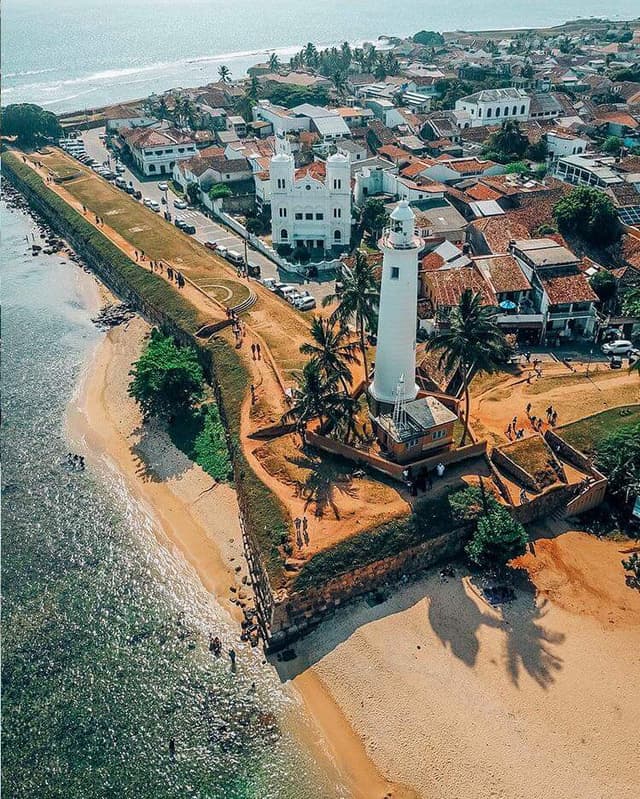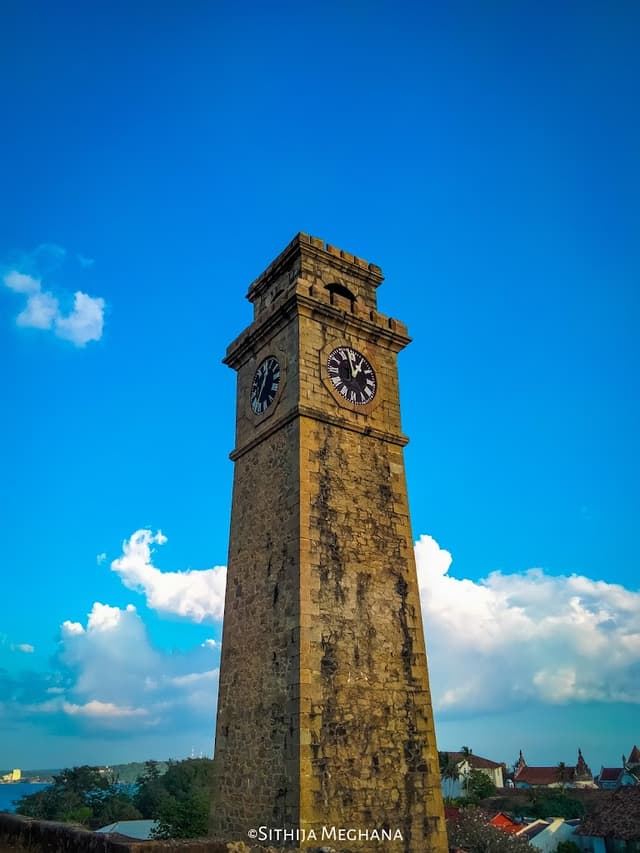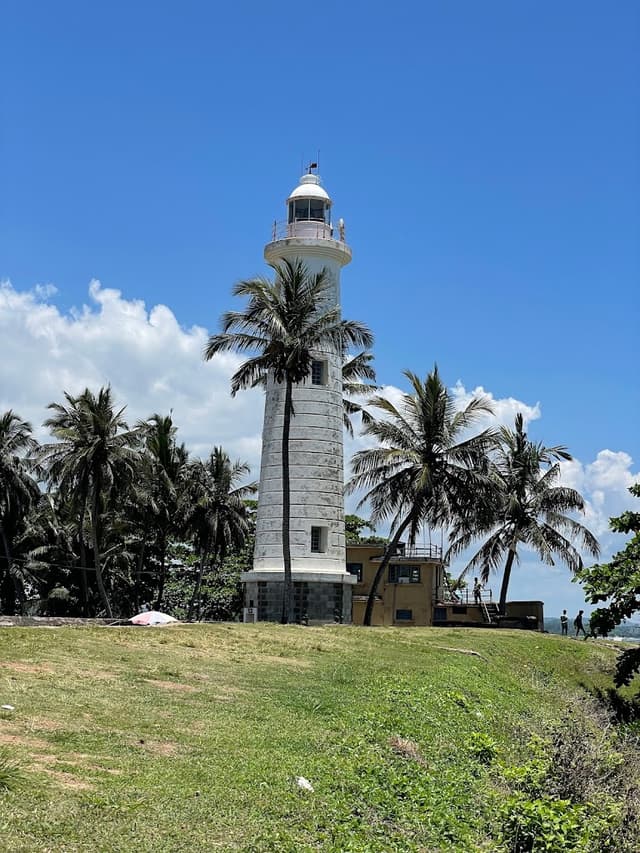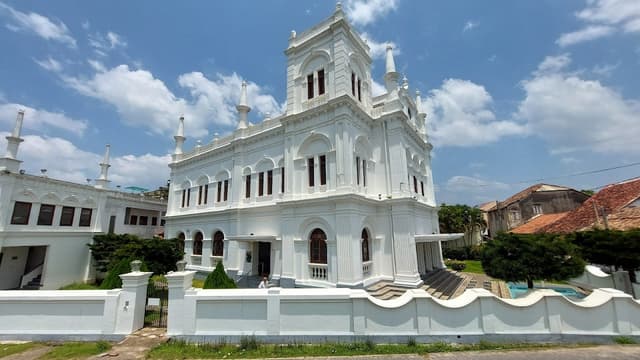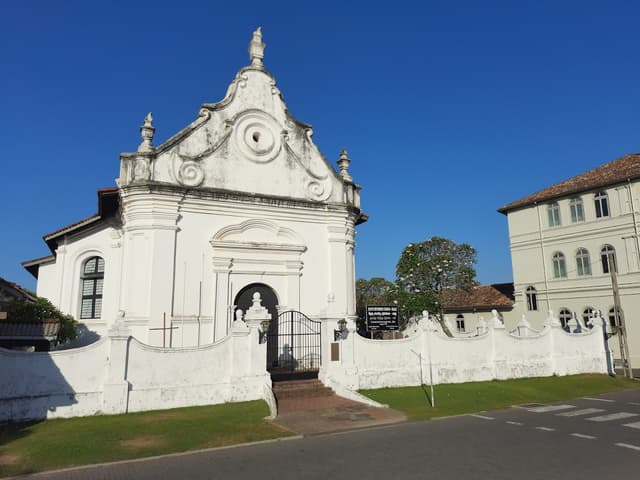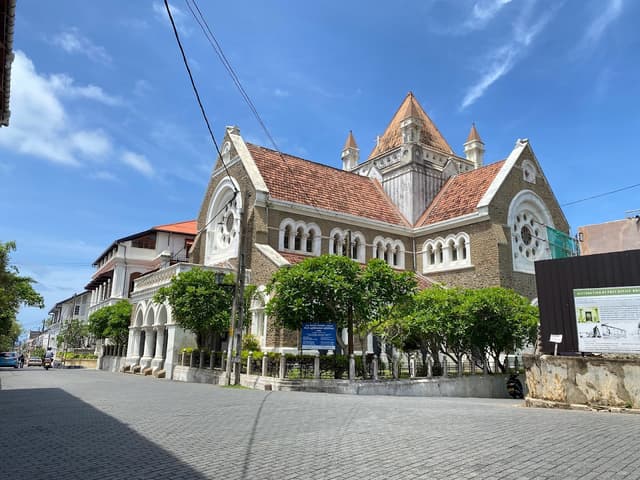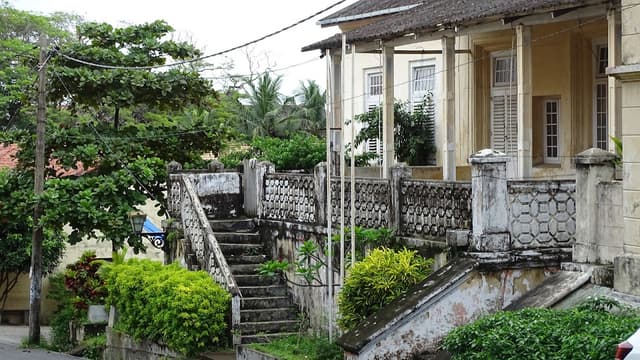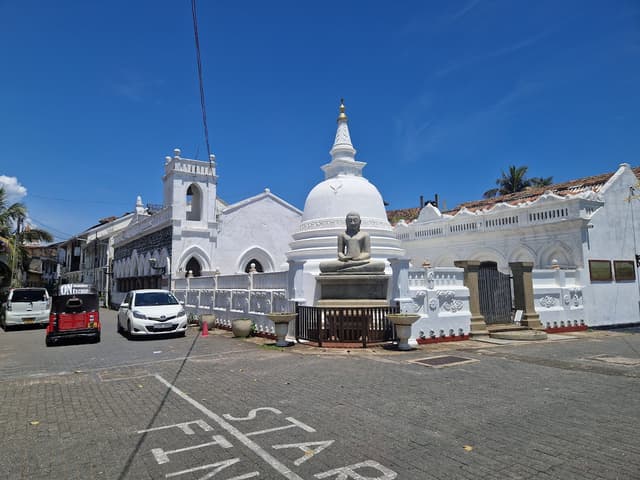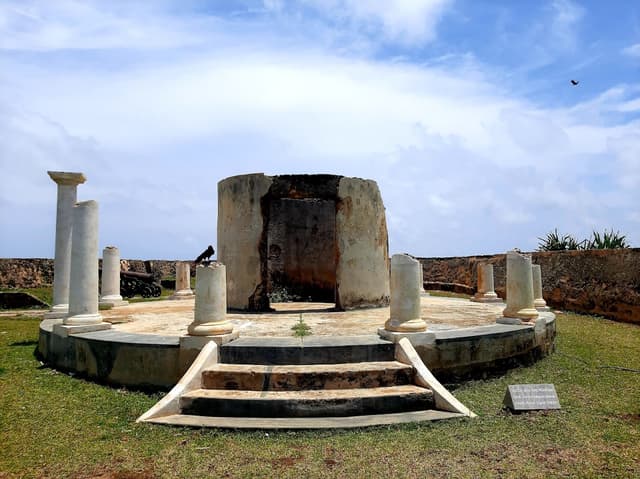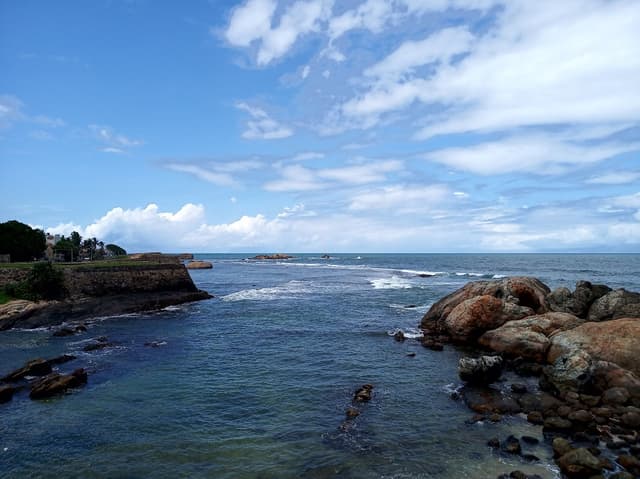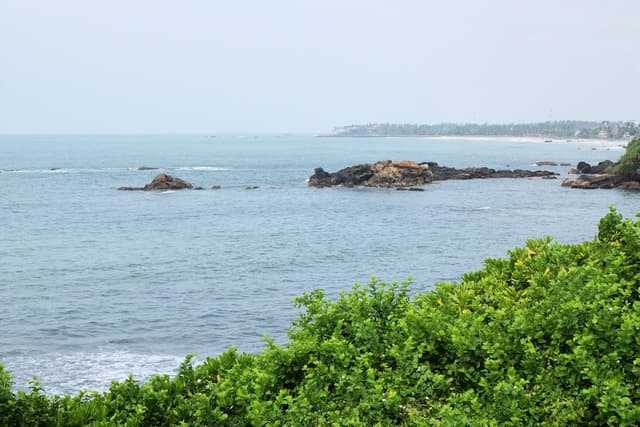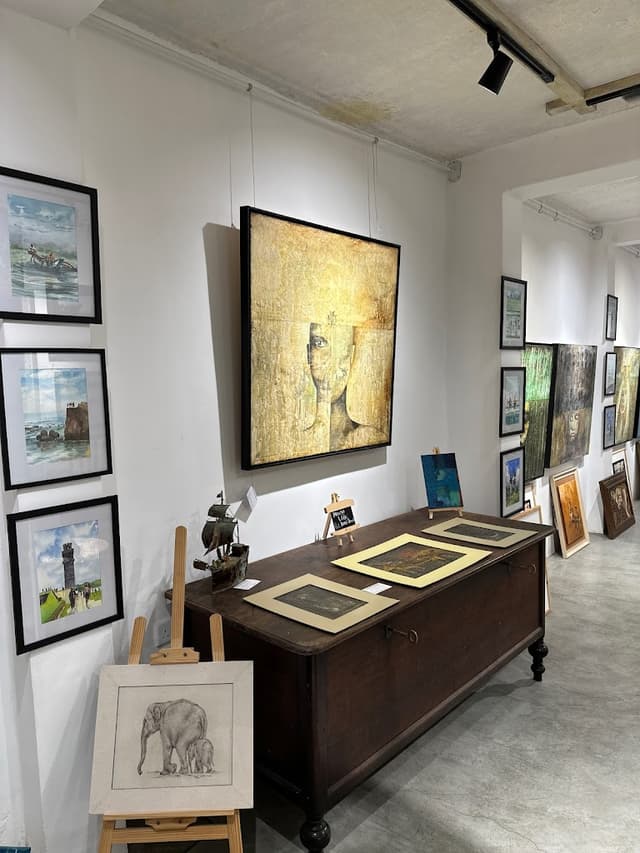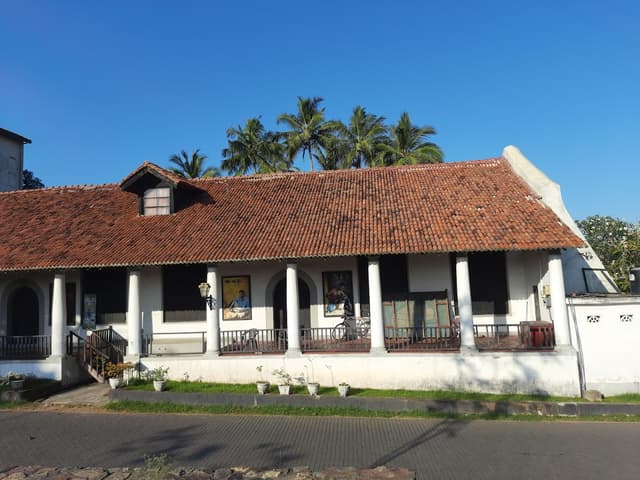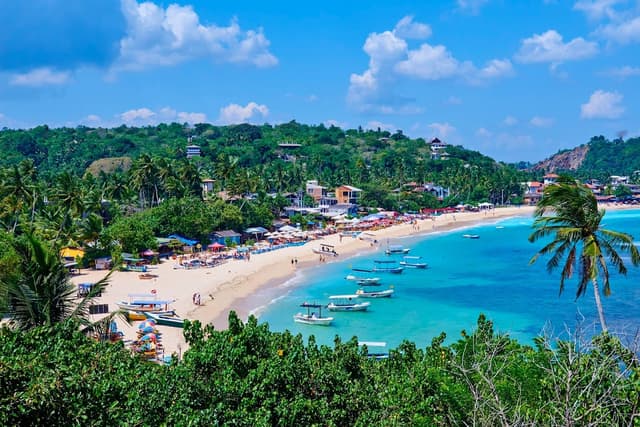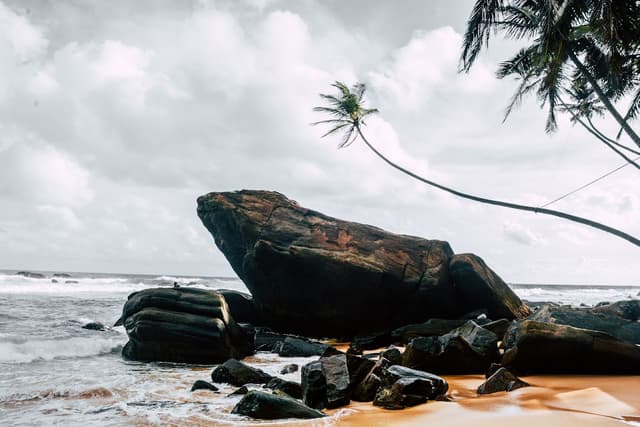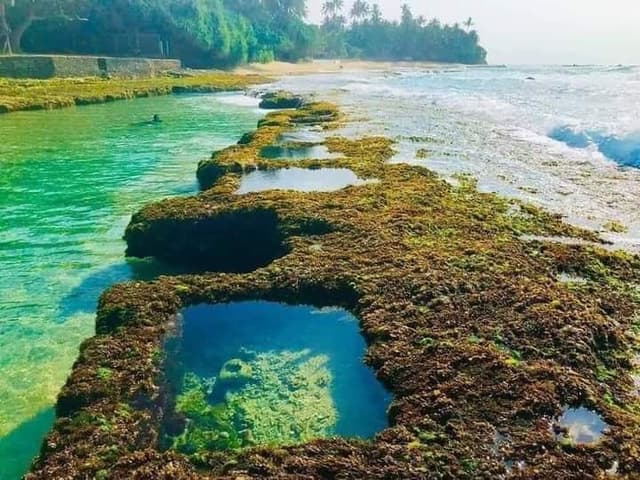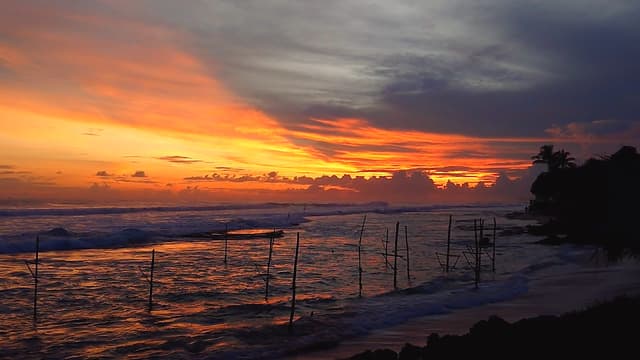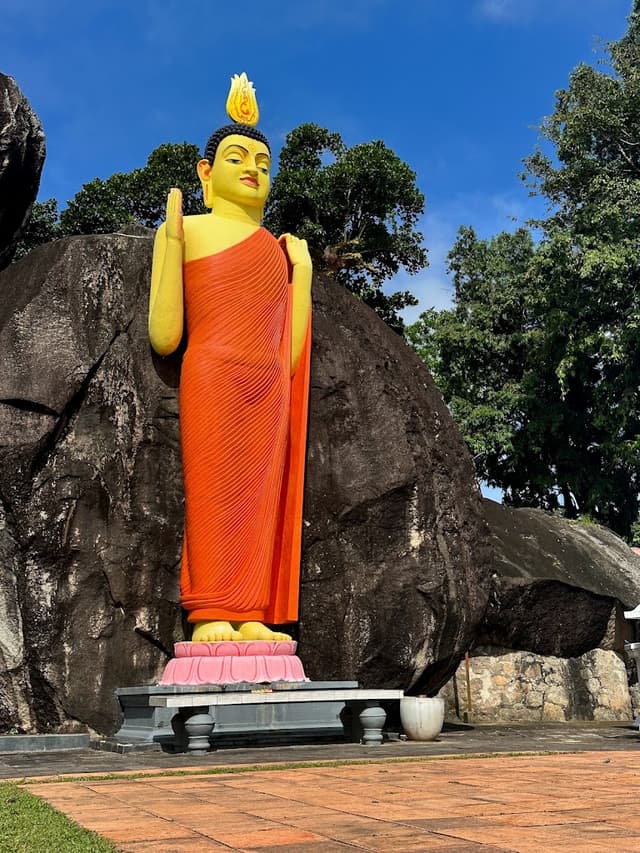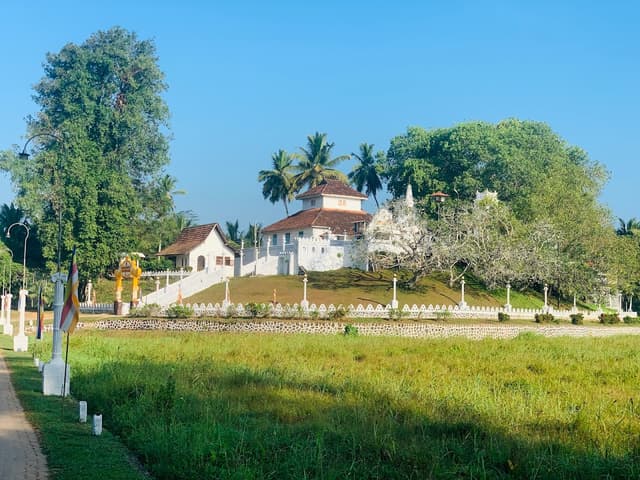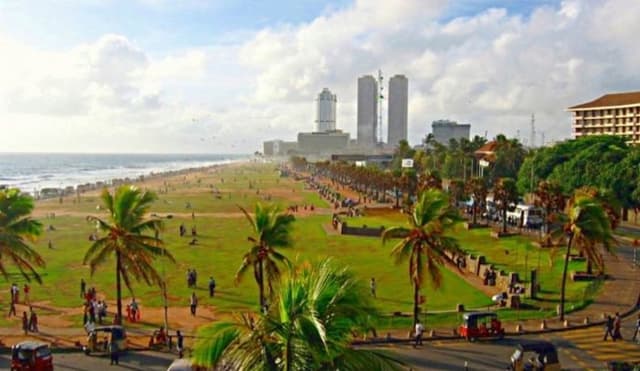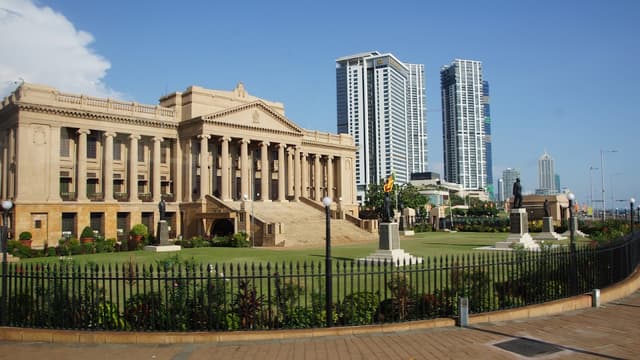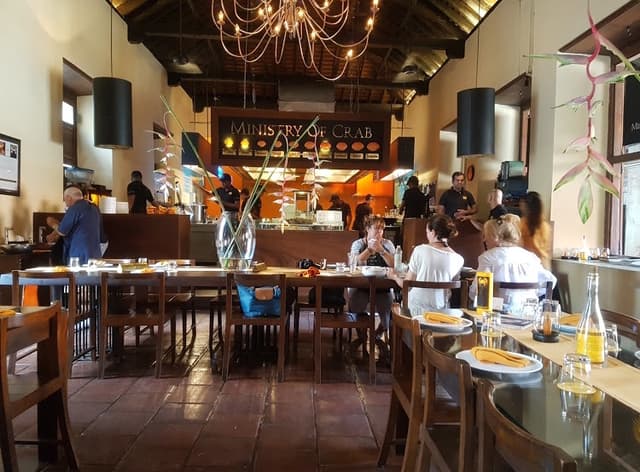Day 1-2
Sigiriya

Sigiriya Town
@ravinkavish
Sigiriya Town, located in the heart of Sri Lanka's cultural triangle, is a charming and vibrant destination with much to offer. Famous for the iconic Sigiriya Rock Fortress, this town is a hub for history, culture, and nature. Sigiriya is a UNESCO World Heritage Site and attracts travelers with its ancient ruins, beautiful gardens, and panoramic views from the top of the rock.
The town itself is peaceful, with plenty of accommodation options, local markets, and eateries offering traditional Sri Lankan cuisine. Sigiriya is also surrounded by lush forests, tranquil lakes, and smaller sites like the Pidurangala Rock, providing visitors with plenty of opportunities for exploration.
**Pro tip:** Visit early in the morning or late afternoon to avoid crowds at Sigiriya Rock and enjoy cooler weather. If you have extra time, explore nearby sites like the ancient city of Polonnaruwa or Minneriya National Park for a full cultural and natural experience. Sigiriya Town is the perfect base for adventurers and history buffs alike.

Details
Nestled in the heart of Sri Lanka’s Cultural Triangle, Sigiriya is more than just the home of the iconic Lion Rock, it’s a laid-back town surrounded by history, wildlife, and adventure. With its central location, Sigiriya is the ideal base for exploring Anuradhapura, Polonnaruwa, and nearby national parks, while still offering a peaceful escape from the busier cities.
Entrance Fees:
Lion Rock - 35USD
Pidurangala Rock - 1000LKR
Dambulla Cave Temple - 2000LKR
Ritigala Strict Natural Reserve - 1800LKR
Minneriya National Park - 35-45USD
Kalawewa National Park - 35-45USD
Kaudulla National Park - 35-45USD
The National Park entrance fee is $45, including tax, and does not include the 4+ pax discount.

Sigiriya Lion Rock
@ravinkavish
Sigiriya Lion Rock, one of Sri Lanka's most iconic landmarks, is a must-visit destination for history and nature lovers alike. This ancient rock fortress rises 200 meters above the surrounding jungle and offers breathtaking panoramic views from the top. Sigiriya is renowned for its impressive architecture, frescoes, and the giant lion's paws that once guarded the entrance to the summit.
The fortress dates back to the 5th century AD, built by King Kashyapa as a royal palace and fortress. As you ascend the rock, you’ll pass through lush gardens, ancient water features, and well-preserved frescoes that depict celestial maidens. The climb to the top is a bit challenging but rewarding, with stunning views of the surrounding landscapes and the nearby Pidurangala Rock.
**Pro tip:** Arrive early to avoid the midday heat and crowds. The best time for a visit is during the early morning or late afternoon when the light creates perfect conditions for photography. Sigiriya Lion Rock is a UNESCO World Heritage site, offering a fascinating blend of history, culture, and natural beauty.

Details
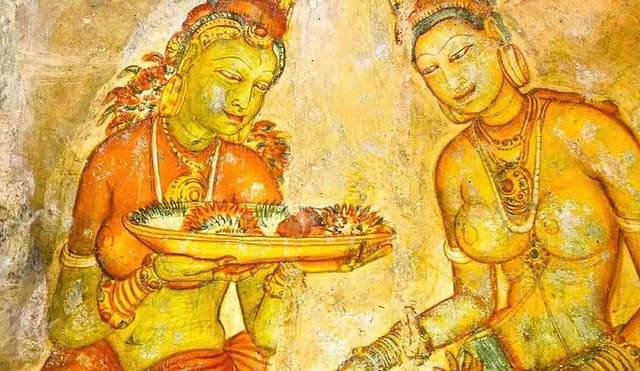
Sigiriya Frescoes (480 AD)
@ravinkavish
The Sigiriya Frescoes, dating back to around 480 AD, are one of the most remarkable features of Sigiriya Rock. These ancient paintings, located on the western face of the rock, showcase vivid depictions of celestial maidens, known as *Apsaras*, adorned in elaborate jewelry and flowing garments. The frescoes are thought to have been created during the reign of King Kashyapa, who built the Sigiriya fortress as both a palace and a symbolic stronghold.
The frescoes are beautifully preserved and are considered to be among the finest examples of ancient Sri Lankan art. The vibrant colors and intricate details give a glimpse into the cultural and artistic achievements of the time. Some believe that the maidens depicted in the frescoes were divine attendants to the king, while others suggest they represent a spiritual or religious aspect of the era.
**Pro tip:** The frescoes can be viewed while climbing Sigiriya Rock, with a viewing platform offering a closer look. The paintings are best seen in the morning light, which highlights their vivid colors. As you ascend, take a moment to appreciate the stunning craftsmanship that has survived for over 1,500 years.

Details
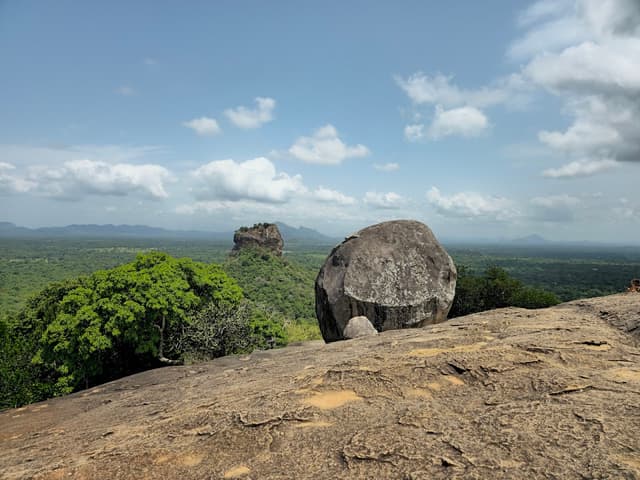
Pidurangala Rock
@ravinkavish
Pidurangala Rock is a stunning natural landmark located just a few kilometers from the iconic Sigiriya Lion Rock. Known for its panoramic views, Pidurangala offers a less crowded alternative to its famous neighbor while still delivering breathtaking vistas of the Sigiriya Rock Fortress and the surrounding jungle.
The climb to the top is an adventurous one, taking you through a mix of jungle paths, boulders, and rock ledges. Along the way, you'll encounter a small Buddhist temple, adding a touch of history and spirituality to the hike. The summit of Pidurangala provides sweeping views of Sigiriya, the surrounding countryside, and distant mountain ranges—an excellent spot for sunrise or sunset.
**Pro tip:** The hike up Pidurangala Rock is shorter but steeper than Sigiriya, and it's much quieter, allowing for a more peaceful experience. To get the best views of Sigiriya, climb early in the morning or late in the afternoon. Pidurangala is the perfect destination for those looking to enjoy both nature and history without the crowds.

Details
Little Pidurangala
@ravinkavish
Little Pidurangala, also known as Mapagala, is a hidden gem just 750 meters from Sigiriya Rock, offering a quieter and equally stunning alternative. This ancient site, once a part of King Kashyapa's defensive fortifications, is a fascinating mix of history and nature. The climb is shorter than Pidurangala, making it perfect for those seeking a less strenuous adventure.
At the summit, you’ll be rewarded with unobstructed views of Sigiriya Rock rising majestically above the lush jungle—a photographer’s dream. The area feels untouched, with fewer crowds, giving it a peaceful and almost secret vibe.
Pro tip: Visit during sunrise or sunset for the most magical views. Little Pidurangala is perfect for travelers who love off-the-beaten-path experiences with a touch of history and breathtaking scenery.

Details
Dambulla Royal Cave Temple
@ravinkavish
Dambulla Royal Cave Temple, a UNESCO World Heritage site, is one of Sri Lanka’s most significant and well-preserved ancient Buddhist temples. Carved into a massive rock face, the temple complex consists of five main caves adorned with over 150 Buddha statues, vibrant frescoes, and intricate murals that tell stories from the Buddha’s life.
As you explore the caves, you’ll be transported back in time to an era where kings and monks sought refuge in these sacred spaces. The panoramic views from the temple’s elevated position are equally stunning, offering a serene landscape of Dambulla and the surrounding countryside.
Pro tip: The climb up the rock can be steep, so wear comfortable shoes and bring water. Visit in the early morning or late afternoon to enjoy cooler temperatures and avoid the crowds. Dambulla Royal Cave Temple is a must-see for those interested in Sri Lanka’s religious heritage, history, and natural beauty.

Details
Dambulla Golden Temple (Dambulu Uyanwatta Raja Maha Viharaya)
@ravinkavish
Dambulla Golden Temple, located at the base of the Dambulla Rock, is an iconic Buddhist site known for its striking golden statue of the Buddha that stands 29 meters tall. The temple is part of the Dambulla Royal Cave Temple complex, but it stands out due to its modern golden exterior and peaceful atmosphere.
Visitors can explore the surrounding temple grounds, which include a large hall filled with beautiful murals and statues of Buddha. The area offers stunning views of the nearby rock and countryside. The temple is a serene spot for reflection, making it a great place to learn more about Sri Lanka’s spiritual heritage.
Pro tip: Visit early to avoid crowds and take in the morning light on the golden statue. The Dambulla Golden Temple is perfect for travelers interested in Buddhist art, history, and stunning architecture.

Details
Wildlife Adventure:
Find a safari Jeep on Trip Advisor
Minneriya National Park
@ravinkavish
Minneriya National Park is a wildlife hotspot, famous for hosting the world-renowned "Elephant Gathering," where hundreds of elephants gather around the Minneriya Tank during the dry season (July to October). It's one of the best places in Sri Lanka to see wild elephants in their natural habitat. Along with elephants, you might encounter toque macaques, sambar deer, and even crocodiles lurking near the water. The park is also home to colorful bird species like kingfishers and painted storks.
Pro tip: An afternoon safari offers the best chance to see elephants and other wildlife as they come to the tank to drink. The park’s open landscapes and forest patches create the perfect setting for unforgettable wildlife sightings and stunning sunset views.

Details
A day trip to Polonnaruwa
Polonnaruwa Ancient City
Polonnaruwa
@ravinkavish
Polonnaruwa, a UNESCO World Heritage site, is one of Sri Lanka's ancient capitals, offering a rich blend of history, culture, and remarkable ruins. The well-preserved archaeological park is home to stunning monuments, including the impressive Gal Vihara, where you'll find massive rock-carved Buddha statues, and the Royal Palace, which once housed Sri Lanka’s kings.
As you explore, don’t miss the Parakrama Samudra, an enormous man-made reservoir that highlights the advanced engineering skills of the time. The site is also dotted with ancient temples, stupas, and beautifully preserved stone carvings, making it a fantastic place for history enthusiasts and photographers alike.
Pro tip: Rent a bicycle to cover the expansive site comfortably, and visit early in the morning or late afternoon to avoid the heat and crowds. Polonnaruwa offers a fascinating glimpse into Sri Lanka’s past, set amidst peaceful surroundings—perfect for an unforgettable cultural journey.

Details
Pro tip: If you're struggling to choose between Anuradhapura and Polonnaruwa, always choose Polonnaruwa!
Polonnaruwa (1.5hrs away) – A well preserved UNESCO World Heritage city, full of ancient temples, giant Buddha statues, and impressive ruins from the 11th–13th centuries.
Entrance fee - 30USD
The entrance fee is unavoidable when visiting Polonnaruwa Ancient City, but it’s absolutely worth it! The site is home to stunning historical ruins, intricate carvings, and beautiful landscapes that transport you back to Sri Lanka’s ancient kingdom. Polonnaruwa is a must-visit destination for history lovers and adventurers alike!
Polonnaruwa Ancient City Ticket Counter and Archaeological Museum Complex
@ravinkavish

Details
Must Visit:
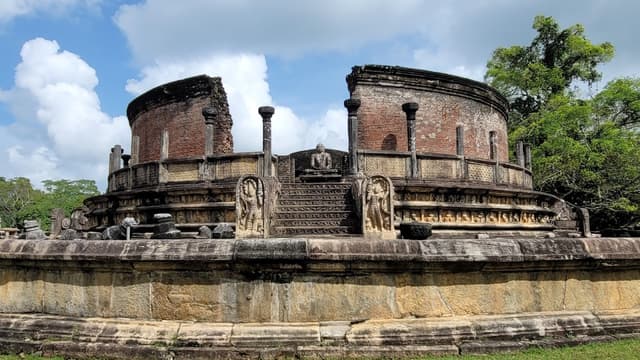
Polonnaruwa Ancient City/ entrance to a collection of ancient sites
@ravinkavish
Polonnaruwa Ancient City, a UNESCO World Heritage site, is one of Sri Lanka’s most significant historical landmarks, offering a fascinating glimpse into the country’s rich cultural and architectural heritage. Once the capital of Sri Lanka from the 11th to 13th centuries, Polonnaruwa is renowned for its well-preserved ruins and ancient structures, which include palaces, temples, and stupas.
The city flourished under the reign of King Parakramabahu I, who is credited with expanding and beautifying the city, as well as building extensive irrigation systems that transformed the area into a prosperous hub. Key highlights of the city include the remarkable *Gal Vihara* rock temple with its stunning Buddha statues, the majestic *Rankoth Vehera* stupa, and the *Royal Palace* ruins. The *Parakrama Samudra*, an ancient man-made reservoir, is also a notable feature of the site, reflecting the advanced engineering of the time.
**Pro tip:** The ancient city is spread over a large area, so it’s recommended to either rent a bicycle or hire a guide to help explore the key sites. It’s also a great place for photography, especially at sunrise or sunset, when the lighting enhances the beauty of the ruins. Take time to appreciate the historical significance of the city and the legacy of the ancient Sri Lankan kings who once ruled from this magnificent capital.

Details
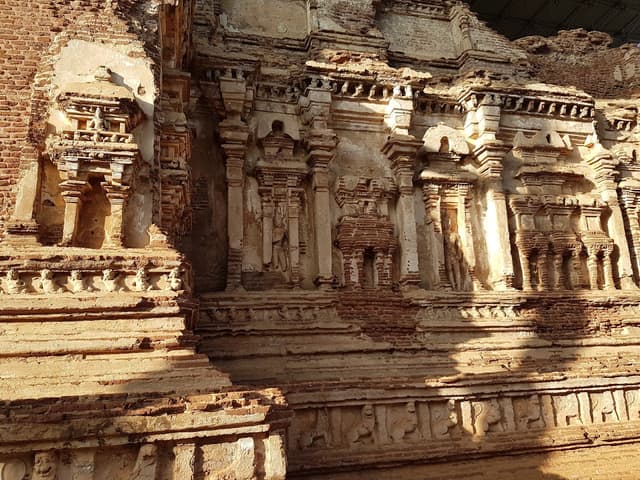
Thivanka Image House
@ravinkavish
Thivanka Image House, located in the ancient city of Polonnaruwa, Sri Lanka, is one of the most significant and well-preserved structures from the island's medieval period. Built by King Parakramabahu I in the 12th century, this historical site is famous for its stunning architecture and intricate carvings. The name "Thivanka" refers to the three bends or curves in the figure of the Buddha depicted inside.
The Image House is renowned for its impressive wall murals and well-preserved Buddha statues, showcasing exquisite examples of Sri Lankan Buddhist art. Visitors can admire the detailed artwork and carvings that depict scenes from the life of the Buddha, as well as the rich cultural history of the era.
**Pro tip:** The Thivanka Image House is part of the Polonnaruwa archaeological complex, so be sure to explore the surrounding ruins, including the Royal Palace and Gal Vihara. The structure is a peaceful and fascinating site for history enthusiasts and anyone interested in Sri Lanka’s ancient Buddhist traditions.

Details
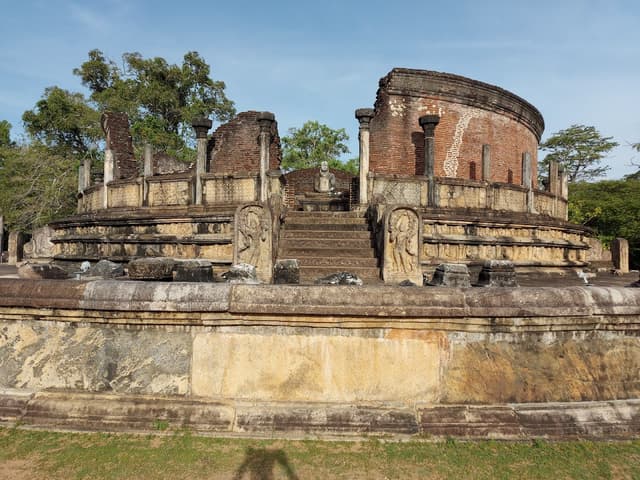
Vatadage
@ravinkavish
Vatadage, located in the ancient city of Polonnaruwa, Sri Lanka, is a beautifully preserved and historically significant circular structure. Built during the reign of King Parakramabahu I in the 12th century, it is one of the most outstanding examples of Sri Lankan architecture from the medieval period.
Vatadage is a unique and impressive structure designed to house sacred relics. The circular building is surrounded by a stone platform with four entryways, each guarded by intricately carved guard stones. At the center of the platform is a stone platform that once supported a large stupa, although it is now in ruins. The most striking feature of the Vatadage is the stunning stone carvings, especially of Buddha statues, which adorn the inner walls.
**Pro tip:** When visiting Vatadage, take time to explore the fine details of the carvings and the layout of the site. The peaceful ambiance and architectural beauty make it a perfect spot for reflection and photography. Visit early in the morning to avoid the heat and experience the serenity of the ancient ruins in a quiet setting.

Details
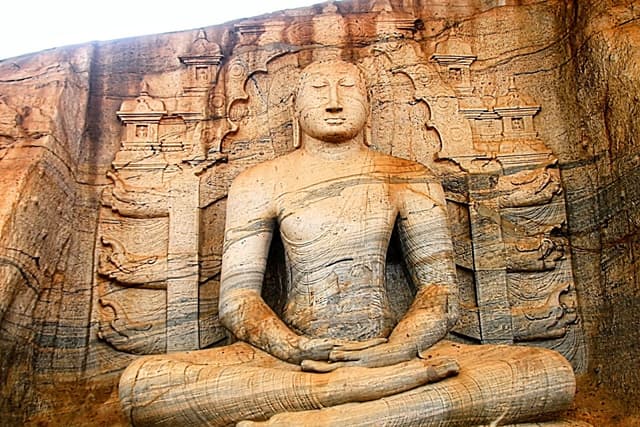
Uththararamaya (Gal Vihara)
@ravinkavish
Uththararamaya, also known as Gal Vihara, is one of the most significant and awe-inspiring Buddhist sites in Sri Lanka, located in the ancient city of Polonnaruwa. This remarkable rock temple, dating back to the 12th century, was built by King Parakramabahu I. It is renowned for its impressive statues of the Buddha, carved directly into the rock face, making it a striking example of ancient Sri Lankan craftsmanship.
The most famous feature of Gal Vihara is its large reclining Buddha statue, which is considered a masterpiece of Sri Lankan sculpture. In addition to the reclining Buddha, there are two standing statues and a seated Buddha, each exuding grace and serenity. The intricate details and proportions of the statues reflect the advanced artistry of the time.
**Pro tip:** Visit early in the morning or late afternoon to avoid the heat and enjoy the peaceful atmosphere of the site. Gal Vihara is a must-see for travelers interested in Sri Lanka's ancient Buddhist art and architecture. It’s a tranquil place to reflect, explore history, and marvel at the craftsmanship of ancient artisans.

Details
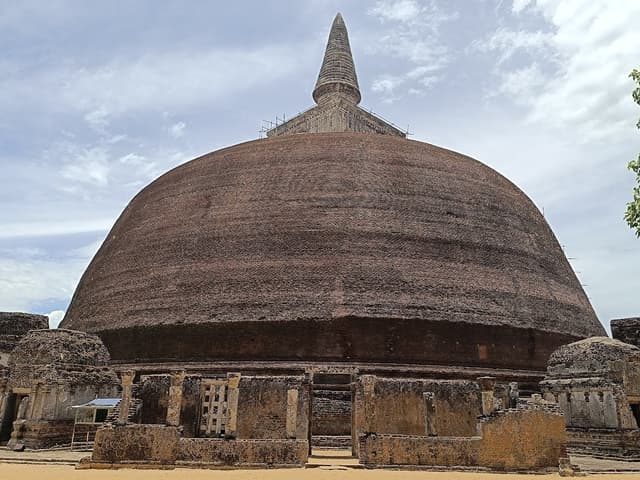
Rankoth Vehera
@ravinkavish
Rankoth Vehera, located in the ancient city of Polonnaruwa, is a stunning stupa with significant historical and religious importance. Built by King Nissanka Malla in the 12th century, this stupa is one of the largest and most beautifully preserved in the region. The name "Rankoth Vehera" translates to "Golden Pinnacle Stupa," reflecting its grandeur and the religious significance it held during its time.
The stupa, with its large dome and beautifully crafted stone railing, stands as a testament to the architectural brilliance of ancient Sri Lanka. It is surrounded by tranquil gardens, adding to its serene and peaceful atmosphere. Visitors can also find smaller structures and relic chambers around the stupa, which were once used for meditation and worship by Buddhist monks.
**Pro tip:** When visiting Rankoth Vehera, take time to appreciate the detailed stone carvings on the surrounding railings and the serene atmosphere of the site. It's a great place to connect with Sri Lanka's ancient Buddhist heritage while enjoying the calm beauty of Polonnaruwa. Be sure to visit at sunrise or sunset for the best lighting and a peaceful experience.

Details
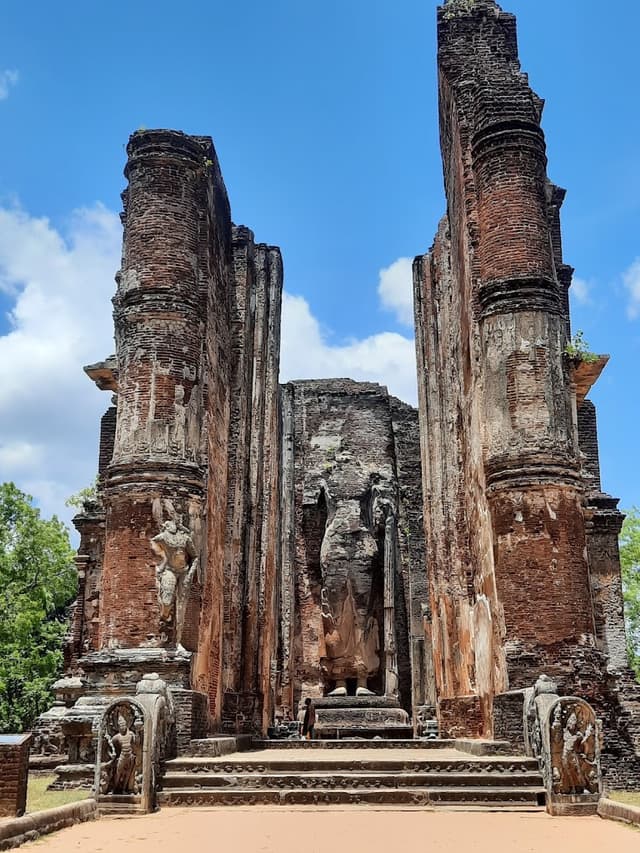
Lankatilaka Temple
@ravinkavish
Lankatilaka Temple, located in the ancient city of Polonnaruwa, is a remarkable and historically significant Buddhist temple known for its unique architecture and serene atmosphere. Built during the 14th century by King Parakramabahu II, the temple stands on a rock plateau and offers panoramic views of the surrounding landscape, adding to its allure.
The temple is best known for its massive image of the Buddha, housed inside a large, imposing structure with intricate carvings and paintings that reflect the rich cultural heritage of the time. The structure is a blend of traditional Sri Lankan and South Indian architectural styles, showcasing the evolution of Buddhist architecture in Sri Lanka.
**Pro tip:** Lankatilaka Temple is often less crowded compared to other sites in Polonnaruwa, offering a more peaceful visit. Be sure to explore the surrounding area, where you can also find the ruins of the surrounding monastery. The temple's serene atmosphere makes it an excellent place for reflection and to appreciate Sri Lanka's ancient architectural and religious heritage.

Details
Kiri Vehera
@ravinkavish
Kiri Vehera, located right next to the Lankathilaka Viharaya in Polonnaruwa, is an ancient Buddhist stupa with immense historical and religious significance. Built during the reign of King Parakramabahu I in the 12th century, this white stupa stands as one of the best-preserved structures in the area. It is believed to house relics of the Buddha, making it an important site for pilgrimage. The peaceful surroundings, coupled with the proximity to the impressive Lankathilaka Viharaya, offer a chance to immerse yourself in Sri Lanka’s rich Buddhist heritage. This serene spot is a must-visit when exploring Polonnaruwa!

Details
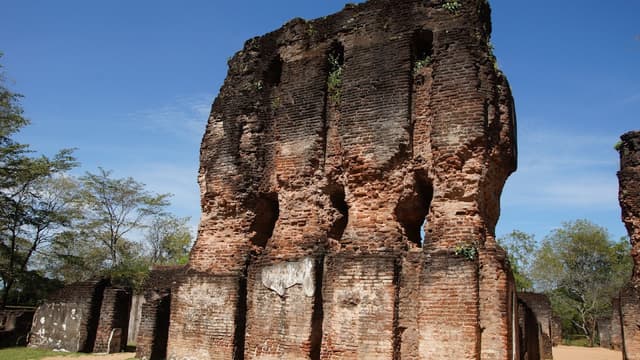
Royal Palace of King Maha Parakramabahu
@ravinkavish
The Royal Palace of King Maha Parakramabahu is one of the most impressive and historically significant structures in the ancient city of Polonnaruwa, Sri Lanka. King Parakramabahu I, who ruled from 1153 to 1186, was one of Sri Lanka’s greatest and most visionary kings, known for his vast contributions to the development of Polonnaruwa and the island's infrastructure. His reign is marked by the construction of many monumental buildings, including his royal palace.
The palace itself was a grand and imposing structure, designed to reflect the king’s power and status. It is believed to have been a multi-story building with elaborately designed rooms, courtyards, and gardens. Though much of the palace has been reduced to ruins, several important features remain visible, including the base of the palace and the foundation walls, which hint at its original grandeur. Visitors can still see the remnants of stone stairways, pillar bases, and sections of walls that once formed part of the royal residence.
The Royal Palace is particularly notable for its use of advanced architectural techniques and intricate stonework, including fine carvings and artistic details that showcase the craftsmanship of the time. Surrounding the palace complex, you can also explore other significant structures built during the reign of Parakramabahu, such as the famous Parakrama Samudra reservoir and the Gal Vihara rock temple.
**Pro tip:** While visiting the Royal Palace of King Maha Parakramabahu, be sure to take in the expansive layout of the site. It’s worth exploring the ruins slowly, as there are many intricate carvings and architectural details to appreciate. Early morning visits are ideal for capturing the beauty of the ruins before the site becomes crowded with other tourists.

Details
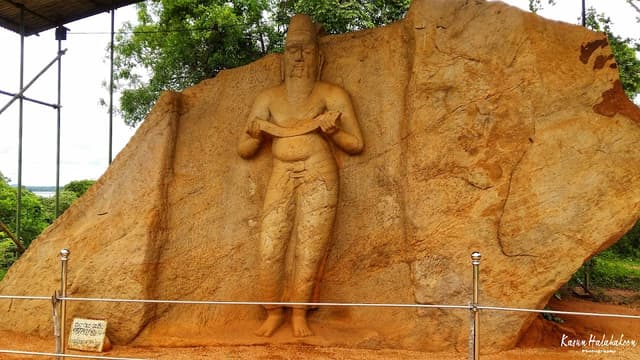
Statue of King Parakramabahu
@ravinkavish
The Statue of King Parakramabahu I stands proudly in the heart of Polonnaruwa, Sri Lanka, as a tribute to one of the island's most revered monarchs. King Parakramabahu I, who reigned from 1153 to 1186, is often remembered for his extraordinary contributions to the development of Sri Lanka, especially in terms of agriculture, infrastructure, and the revival of the island's glory after a period of fragmentation.
The statue is located near the Parakrama Samudraya (Sea of Parakrama) reservoir, which the king famously constructed during his reign. Standing tall and regal, the statue depicts King Parakramabahu I as a warrior king, symbolizing his strong leadership and his role in unifying the country under one rule. The statue’s presence near the reservoir serves as a reminder of his forward-thinking policies, such as his massive irrigation projects, which transformed Sri Lanka's agriculture and ensured the prosperity of the kingdom.
Historical Significance:
King Parakramabahu I’s reign marked a golden era in Sri Lanka's history. His administration was known for implementing extensive irrigation systems, building reservoirs, and improving trade and commerce. His famous quote, "Not a drop of water should flow into the sea without being used by man," reflects his revolutionary approach to water management, and the Parakrama Samudraya is one of his most enduring legacies.
**Pro tip:** The statue is a great spot for photography, especially at sunrise or sunset when the light enhances the grandeur of the monument. After visiting the statue, take a walk around the nearby Parakrama Samudraya and explore the ancient city of Polonnaruwa to fully appreciate the king's lasting influence on the region.

Details
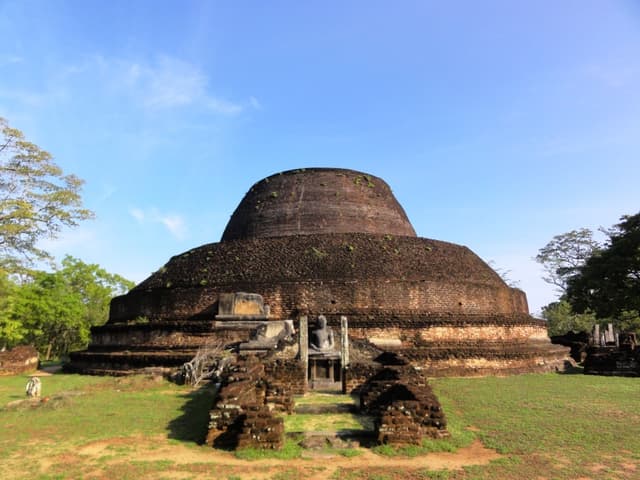
Pabalu Vehera
@ravinkavish
Pabalu Vehera, located in the ancient city of Polonnaruwa, Sri Lanka, is an important and serene Buddhist stupa with a fascinating history. It is believed to have been constructed by King Parakramabahu I in the 12th century, making it one of the many remarkable structures built during his reign. The name "Pabalu Vehera" translates to "The Stupa of Pearl," likely referring to its historical association with relics and the treasure of ancient Buddhist monks.
Though smaller than some of the other stupas in the region, Pabalu Vehera is noted for its unique charm and peaceful surroundings. The stupa is surrounded by lush greenery and well-maintained grounds, offering visitors a tranquil place to reflect and enjoy the spiritual ambiance.
**Pro tip:** The relatively quieter nature of Pabalu Vehera, compared to the larger stupas of Polonnaruwa, makes it an excellent spot for those seeking a peaceful experience away from the crowds. Explore the surrounding area for other historical ruins and enjoy the calming atmosphere of this sacred site.

Details
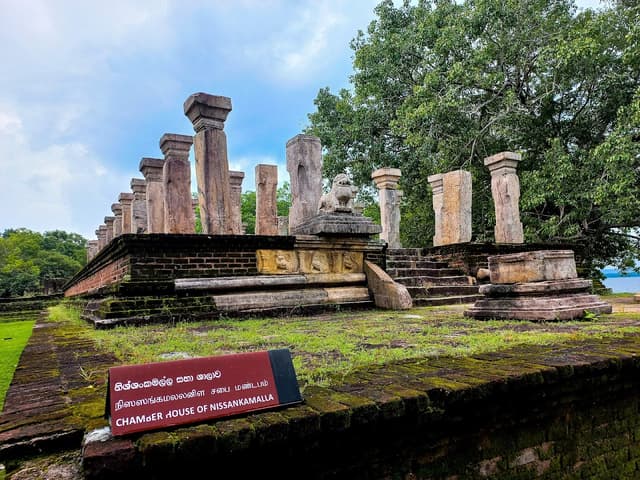
Deepa Uyana and Nissankamalla Palace
@ravinkavish
Deepa Uyana, located in the ancient city of Polonnaruwa, Sri Lanka, is an ancient garden complex that adds a serene, lush element to the historical site. This tranquil area, which is believed to have been used as a royal garden, is part of the grand design of Polonnaruwa’s sacred and royal precincts.
The garden is most notable for its well-maintained water features, including a large pond, intricate water channels, and water fountains that reflect the advanced hydraulic engineering of the time. The landscape is beautifully complemented by various stone carvings and sculptures, and it is often associated with the reign of King Parakramabahu I, who is known for his remarkable contributions to the city's development.
**Pro tip:** Deepa Uyana offers a peaceful retreat with its lush greenery and serene atmosphere, making it a perfect spot for a quiet walk or meditation. Don’t forget to take in the beauty of the ancient water features and the harmony between nature and architecture. Early mornings or late afternoons are the best times to visit, as the weather is cooler, and the light creates a beautiful effect on the surrounding ruins.

Details
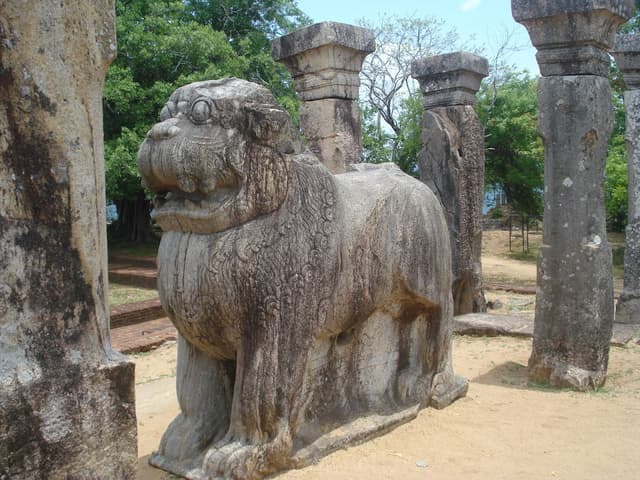
Palace Complex of King Nissankamalla
@ravinkavish
The Palace of King Nissanka Malla, located in the ancient city of Polonnaruwa, Sri Lanka, is an impressive structure that dates back to the 12th century. Built by King Nissanka Malla, who ruled Sri Lanka from 1187 to 1196, the palace reflects the grandeur and architectural skill of the time.
The palace was once a majestic royal residence, but today, only the ruins remain. The layout of the palace consists of a large rectangular complex with an inner courtyard and numerous rooms. Some parts of the palace, like the stone stairways and walls, are still quite well-preserved, offering visitors a glimpse of the palace's former splendor. The site also features intricately carved stonework and decorative pillars, which are testament to the artistic abilities of ancient Sri Lankan craftsmen.
**Pro tip:** When visiting the Palace of King Nissanka Malla, be sure to explore the surrounding area, as the site is part of a larger archaeological zone in Polonnaruwa. Don’t miss the stunning stone carvings and detailed artwork that remain on the walls, and imagine the vibrant royal life that once unfolded here. The palace is best visited early in the day to avoid the heat and to enjoy the peaceful atmosphere of this historic site.

Details
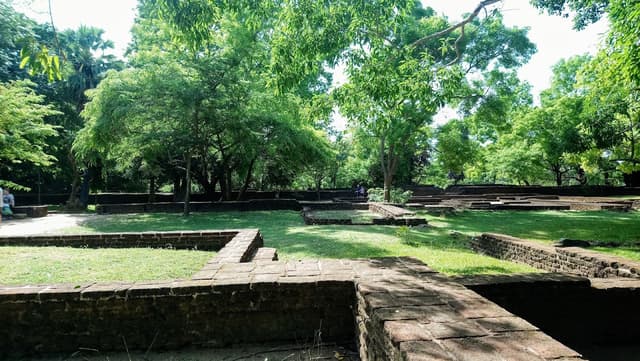
Palace of King Vijayabahu the Great
@ravinkavish
The Palace of King Vijayabahu the Great is an important historical site in the ancient city of Polonnaruwa, Sri Lanka. King Vijayabahu I, who reigned from 1055 to 1110, is best known for his role in uniting Sri Lanka after a period of fragmentation and for establishing Polonnaruwa as the capital of the island following the decline of Anuradhapura.
Vijayabahu's palace, which is now in ruins, was once a grand and strategic center of royal power. The palace complex is believed to have been a large, multi-level structure with significant architectural features, designed to reflect the king's authority. The site consists of the remains of several stone-built structures, including foundations, platforms, and walls, which give a glimpse of the grandeur that once defined this royal residence.
One of the most remarkable features of the palace is its strategic location. It was built on elevated ground with sweeping views of the surrounding landscape, including the extensive reservoirs and irrigation systems that the king developed to support agriculture and the economy of Polonnaruwa. The palace area is part of a larger royal precinct that includes other important sites such as the Vatadage and the Atadage, making it an essential part of the city's historical and architectural legacy.
**Pro tip:** When visiting the Palace of King Vijayabahu, take the time to explore the remains of the palace walls and foundations, as well as the surrounding royal precinct. While the site is not as heavily visited as some of the other attractions in Polonnaruwa, it offers a unique opportunity to appreciate the early history of the city. Early morning or late afternoon visits are ideal for avoiding crowds and capturing the beauty of the ancient ruins.

Details
Day 3
Kandy – The Heart of Sri Lanka
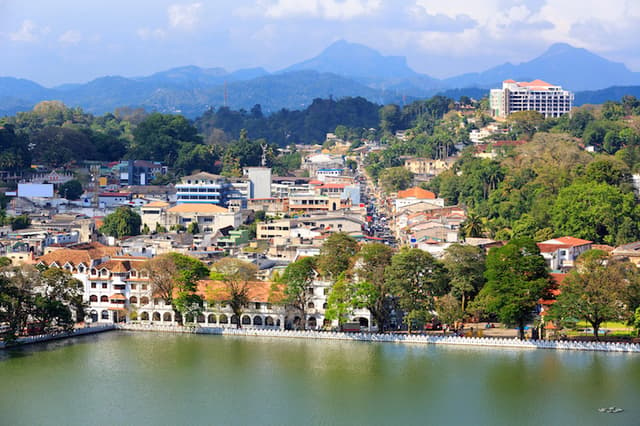
Kandy
@ravinkavish
Kandy, nestled in the lush hill country of Sri Lanka, is a city of deep cultural, historical, and spiritual significance. As the last capital of the ancient Sinhala kings, it played a crucial role in preserving the island’s heritage during colonial times. The city’s crown jewel is the Temple of the Sacred Tooth Relic (Sri Dalada Maligawa), which houses a sacred tooth of the Buddha and is a UNESCO World Heritage Site.
Surrounded by emerald-green hills, Kandy is also known for the picturesque Kandy Lake, which adds to its serene atmosphere. The city comes alive during the annual Esala Perahera, a grand cultural procession featuring elephants, dancers, and drummers that pay homage to the Sacred Tooth Relic.
Beyond its cultural attractions, Kandy offers a gateway to nature, while the Royal Botanical Gardens in Peradeniya showcases a stunning collection of flora. The bustling streets of Kandy are perfect for sampling local delights like Kandyan sweets or shopping for traditional crafts and jewelry.
**Pro tip:** Visit the city in the early morning to explore the Temple of the Tooth before the crowds, and plan a sunset walk around the lake for spectacular views of Kandy’s skyline. Don’t miss the chance to take a scenic train ride to or from Kandy, one of the most beautiful rail journeys in the world.

Details
After immersing yourself in history, head to Kandy.
This city is the cultural heart of Sri Lanka, famous for its beautiful Temple
of the Tooth and serene Kandy Lake. Take a peaceful stroll around
the lake or visit a traditional cultural performance in the evening.
Entrance Fee:
Sri Dalada Maligawa - 2000LKR
Kandyan Cultural Centre - 2500LKR
Bogambara prison Park - 500LKR
Royal Botanic Gardens - 3500LKR
Sri Lankathilake Rajamaha Viharaya - 500LKR
Must Visit:

Sri Dalada Maligawa
@ravinkavish
The Sri Dalada Maligawa, or Temple of the Sacred Tooth Relic, is one of the most revered Buddhist sites in the world, located in the heart of **Kandy**. This temple is home to the Tooth Relic of Lord Buddha, an artifact that holds immense spiritual and historical significance to Buddhists in Sri Lanka and around the world. The relic is believed to have been brought to Sri Lanka in the 4th century and has played a key role in the island’s religious and political history.
The temple itself is a stunning example of Kandyan architecture, with intricate wooden carvings, golden embellishments, and beautifully decorated interiors. The Inner Chamber, where the Tooth Relic is kept, is carefully guarded and is only opened during religious ceremonies. Devotees from across the world come to offer their prayers, and special rituals, such as the Dalada Perahera (a grand procession), are held annually in July and August to honor the relic.
The Sri Dalada Maligawa is located near Kandy Lake, which adds to the tranquil and sacred atmosphere of the temple. Visitors can explore the various halls, courtyards, and shrines within the complex, each with its own cultural and historical importance.
**Pro tip:** When visiting, ensure you dress modestly as the temple is a sacred site. Also, consider visiting during the evening for the special puja (prayer) ceremony to witness the religious rituals surrounding the sacred relic.

Details
Magul Maduwa Audience Hall
@ravinkavish
The Magul Maduwa (Audience Hall) in Kandy is where the last king of Sri Lanka, Sri Vikrama Rajasinha, held court and made crucial decisions during the final years of the Kandyan Kingdom. This historic wooden pavilion, with its beautifully carved pillars, stands within the Temple of the Tooth complex. It’s also the spot where the British officially took control of the kingdom in 1815, marking the end of Sri Lanka’s monarchy. Despite its somber history, the hall remains an impressive architectural piece, offering a glimpse into the grandeur of the Kandyan era.

Details
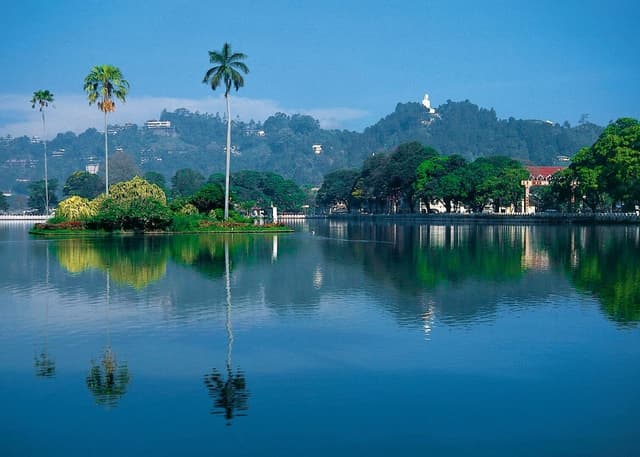
Kandy Lake
@ravinkavish
Kandy Lake, also known as Kiri Muhuda or the "Sea of Milk," is a serene man-made lake in the heart of Kandy city, just steps away from the revered Temple of the Sacred Tooth Relic. Built in 1807 by King Sri Wickrama Rajasinghe, the last king of Sri Lanka, this picturesque lake was intended to enhance the beauty and tranquility of the royal capital.
Surrounded by a walking path shaded by large trees, Kandy Lake offers a peaceful retreat from the bustling city. Along the lake, you'll find small islands, charming white parapet walls known as *walakulu bamma* (cloud wall), and plenty of benches to sit and admire the view. The lake is also home to diverse birdlife and occasionally turtles.
**Pro tip:** Take a leisurely stroll around Kandy Lake in the early morning or late evening to enjoy the cool breeze and stunning views of the surrounding hills and the Temple of the Tooth. It’s a great spot for photography, reflection, or simply unwinding in the historic heart of Kandy.

Details
Bathhouse of Queens (Ulpen Geya)
@ravinkavish
The Ulpen Geya, or the Royal Bathing Pavilion, is a charming historic structure located on the banks of Kandy Lake. Built during the Kandyan Kingdom, it served as a private bathing retreat for the royal family. The pavilion’s unique architecture reflects traditional Kandyan style, with intricate woodwork and a serene ambiance that blends harmoniously with its lakeside setting.
Today, the pavilion stands as a quiet reminder of Kandy’s regal past, often admired for its scenic location. While visitors cannot enter the pavilion, its proximity to the lake makes it a perfect spot for photos and leisurely strolls.
**Pro tip:** Visit during the early morning or evening to enjoy the cool breeze and tranquil views of the lake. Combine this with a walk around Kandy Lake to fully soak in the historic and cultural vibe of the area.

Details
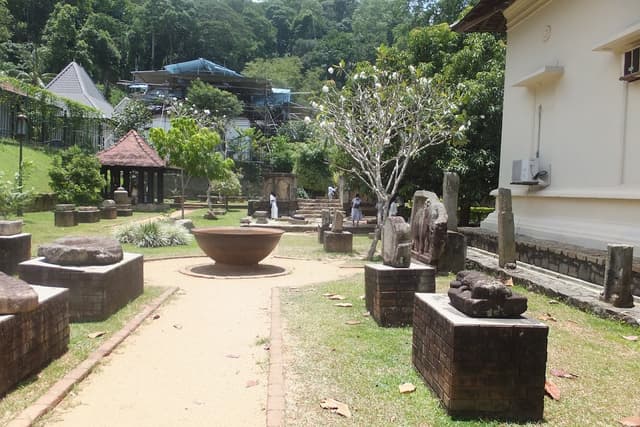
Open Air Museum - Temple of the Tooth
@ravinkavish
The Open Air Museum of the Temple of the Tooth, located near the iconic Sri Dalada Maligawa in Kandy, is a unique space that brings the cultural and historical essence of the Kandyan Kingdom to life. This outdoor museum showcases artifacts, statues, and artistic creations that complement the grandeur and spiritual significance of the Temple of the Sacred Tooth Relic.
The exhibits include intricately carved stone sculptures, ancient inscriptions, and replicas of significant elements related to the temple and the Kandyan era. The museum is designed to immerse visitors in the artistry and craftsmanship of the period, with many pieces highlighting the influence of Buddhism on Kandyan art and architecture.
The serene surroundings of the museum, with lush greenery and Kandy Lake nearby, make it a peaceful spot for reflection and learning. It's a perfect complement to a visit to the temple, providing deeper insights into the cultural and historical context of one of Sri Lanka’s most treasured landmarks.
**Pro tip:** Visit during the early morning or late afternoon to enjoy the museum in cooler weather and avoid crowds. Pair it with a stroll around Kandy Lake for a relaxing and culturally rich experience.

Details
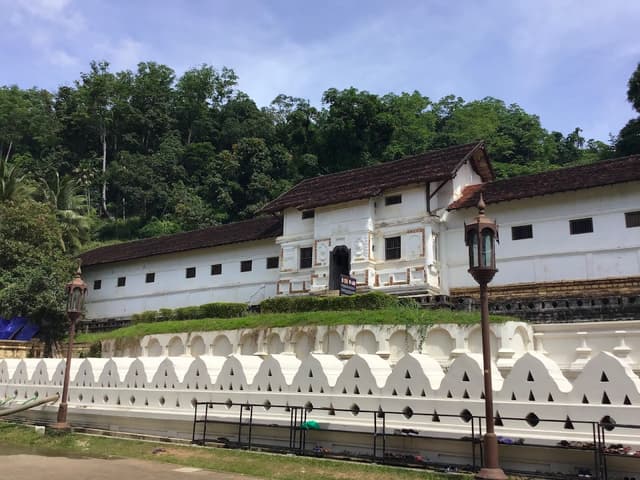
Old Royal Palace
@ravinkavish
The Old Royal Palace of Kandy, located near the Temple of the Sacred Tooth Relic, is a magnificent remnant of Sri Lanka’s last kingdom. Built during the reign of the Kandyan kings, the palace was the official residence of the monarchs until the British captured the city in 1815, marking the end of an era.
The complex features traditional Kandyan architecture, with intricate woodwork, elegant courtyards, and structures that reflect the artistic and cultural achievements of the kingdom. While much of the palace has been affected by time and historical events, significant portions remain intact, giving visitors a glimpse into the grandeur of the Kandyan royal court.
The palace complex includes several significant structures, such as the Audience Hall, where royal ceremonies and discussions took place. This hall is particularly famous for its wooden pillars carved with exquisite floral and geometric patterns. Nearby, the Queen’s Chambers and other auxiliary buildings showcase the practical yet artistic design of the time.
Today, the Old Royal Palace serves as a museum and cultural site, offering insights into the history, art, and architecture of the Kandyan period.
**Pro tip:** Combine your visit to the palace with a trip to the adjacent Temple of the Sacred Tooth Relic for a comprehensive experience of Kandy’s royal and spiritual heritage. Don’t forget to take your time exploring the intricate carvings in the Audience Hall—they’re a photographer’s dream!

Details
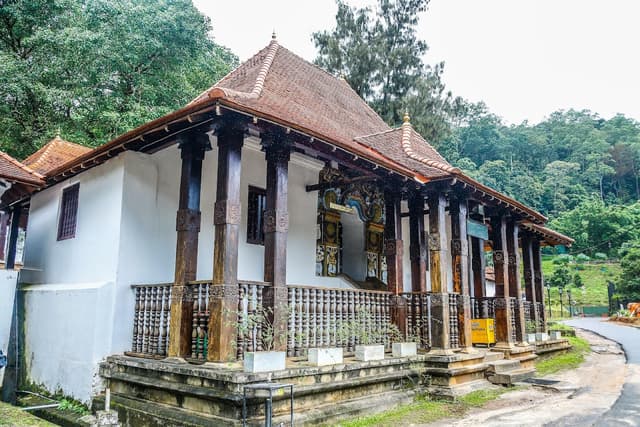
Sri Vishnu Devalaya
@ravinkavish
The Sri Vishnu Devala in Kandy is a sacred shrine dedicated to Lord Vishnu, one of the most revered deities in Hinduism and an important guardian deity in Sri Lankan Buddhism. Known locally as the Maha Vishnu Devalaya, this historic temple is part of the Temple of the Sacred Tooth Relic complex and plays a vital role in the religious and cultural fabric of Kandy.
Believed to have been constructed during the Kandyan kingdom, the Devala is a place where both Hindus and Buddhists come to seek blessings and protection. Lord Vishnu is venerated here as a divine protector of Sri Lanka and as one who ensures the continuity of the Buddha's teachings on the island. The architecture of the shrine features traditional Kandyan styles, with ornate wooden carvings, decorative arches, and vibrant murals depicting Vishnu's role in Sri Lankan history and folklore.
The shrine is integral to the annual **Esala Perahera**, where offerings are made to Lord Vishnu before the procession begins. The rituals performed here reflect a harmonious blend of Hindu and Buddhist practices, showcasing Sri Lanka's rich cultural integration.
**Pro tip:** When visiting the nearby Temple of the Sacred Tooth Relic, take time to explore this lesser-known but spiritually significant shrine. Visitors should dress modestly and respect the sacred atmosphere of the site.

Details
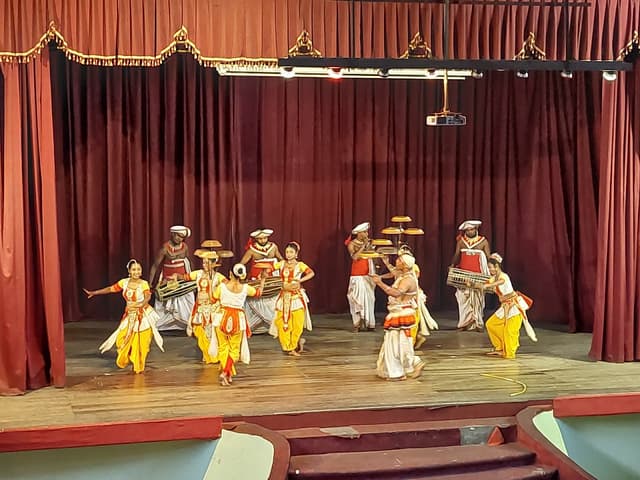
Kandyan Cultural Centre
@ravinkavish
Highly Recommended for Culture Lovers
Cultural Performances Starts - 5:30 PM
Entrance Fee - 2500
One of the main attractions here is the traditional Kandyan dance performances. These shows are a high-energy mix of drumming, dancing, and acrobatics, featuring intricate costumes and colorful masks. It’s a fantastic way to experience Sri Lankan performing arts up close and feel the rhythm and energy of local traditions.
The center also offers a glimpse into traditional crafts. You can check out local artisans demonstrating their skills in areas like weaving, wood carving, and mask-making. It’s a cool chance to see how these ancient crafts are still practiced today.
The museum section of the center has displays of traditional Sri Lankan artifacts, including costumes, musical instruments, and ceremonial objects. It’s a great spot to learn about the cultural significance of these items and how they were used in ceremonies and daily life.
Overall, the Kandyan Cultural Centre is a vibrant hub for anyone looking to experience and understand the rich cultural heritage of Kandy. It’s lively, educational, and a lot of fun—perfect for getting a deeper dive into Sri Lankan culture.

Details
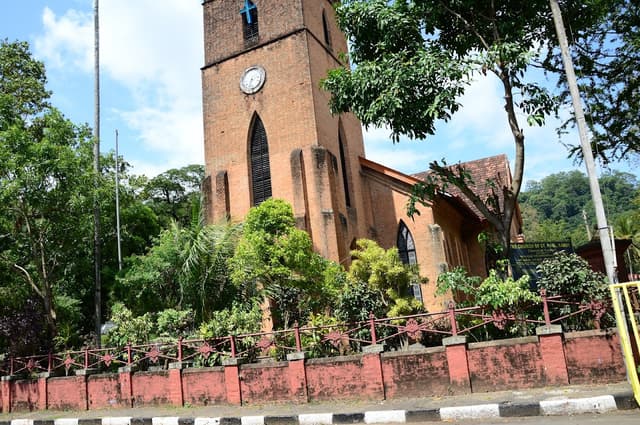
St Paul's Church, Kandy
@ravinkavish
St. Paul’s Church in Kandy is a historical Anglican church that stands as a quiet testament to the colonial era and the city’s multicultural heritage. Located adjacent to the Temple of the Sacred Tooth Relic, this charming church offers a fascinating contrast to the Buddhist temples of Kandy while sharing in the spiritual tranquility of the area.
Built between 1843 and 1852, during the British colonial period, St. Paul’s Church served as a place of worship for British officers and residents. Its neo-Gothic architecture, featuring stained glass windows, intricate wooden pews, and a stately bell tower, reflects classic British ecclesiastical designs of the 19th century. The interior is serene and simple, with polished wooden beams and a peaceful ambiance ideal for reflection.
The church is still active today, hosting services and welcoming visitors of all faiths. Its proximity to the Temple of the Sacred Tooth Relic makes it a unique stop for travelers exploring the rich spiritual and cultural tapestry of Kandy.
**Pro tip:** After visiting the church, enjoy a leisurely walk around Kandy Lake, located just across the road, to soak in the serene beauty of the hill capital. Don’t forget to check the service schedule if you’d like to attend a traditional Anglican worship session.

Details
Bogambara Prison Park
@ravinkavish
Bogambara Prison Park, located in the heart of Kandy, is a fascinating site that blends history and modernity. Once a colonial-era prison dating back to 1876, it has now been transformed into a public park that offers insight into Sri Lanka's penal history while providing a serene green space for relaxation. The well-preserved architecture of the old prison, including its high walls and iconic gate, stands as a reminder of its historic past.
The park is an excellent spot for a leisurely walk or simply to enjoy the surrounding views of Kandy. Information boards around the site provide details about its history, making it a unique cultural and historical experience.
**Pro tip:** Visit during the late afternoon to enjoy cooler weather and take in the history of the site as you stroll. Bogambara Prison Park is a must-visit for travelers who enjoy combining history with a tranquil environment.

Details
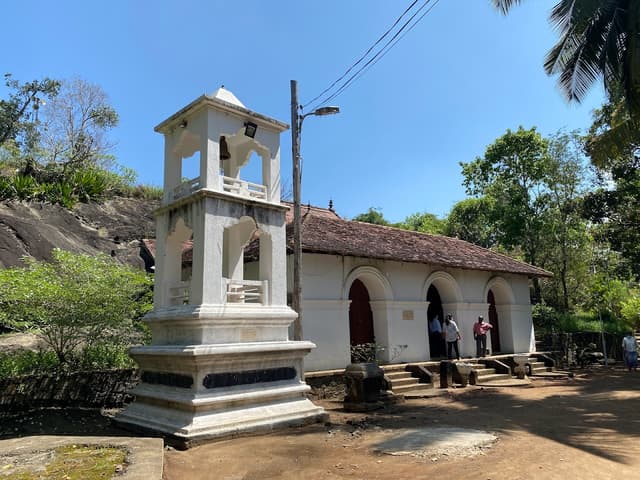
Degalldoruwa Raja Maha Viharaya
@ravinkavish
Degalldoruwa Raja Maha Viharaya, nestled in a quiet village near Kandy, is a hidden gem of Sri Lanka's Buddhist heritage. Built during the reign of King Kirti Sri Rajasinha in the 18th century, this temple is famous for its exquisite Kandyan-style murals and rock-hewn architecture, showcasing the artistic and spiritual richness of the era.
The temple is carved directly into a massive rock, creating a natural and serene atmosphere for meditation and worship. Its inner chambers house vividly painted murals depicting scenes from Jataka tales, Buddhist teachings, and local folklore. These frescoes, considered some of the finest examples of Kandyan art, were painted by master artists of the time and are well-preserved, offering visitors a glimpse into Sri Lanka's artistic legacy.
The **Degalldoruwa Stupa**, built atop the rock, adds to the temple's charm, offering panoramic views of the surrounding countryside. Visitors often comment on the peaceful vibe of the site, making it a perfect retreat for those seeking a tranquil and spiritually enriching experience.
**Pro tip:** Combine your visit to Degalldoruwa with a trip to Kandy for a day filled with cultural exploration. Early mornings are ideal to enjoy the temple's serene ambiance without crowds.

Details
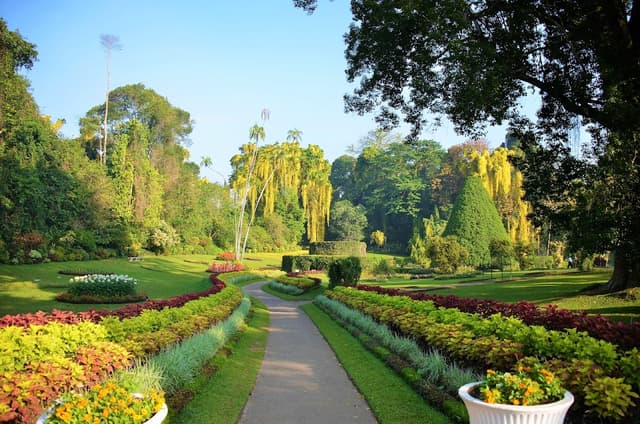
Royal Botanic Gardens, Peradeniya
@ravinkavish
The Royal Botanic Gardens, Peradeniya, located just outside the bustling city of Kandy, is one of Sri Lanka's most renowned gardens and a must-visit for nature lovers and travelers. Spanning over 147 acres, this beautifully landscaped garden is home to more than 4,000 species of plants, including tropical and subtropical trees, palms, orchids, and medicinal plants. It offers a peaceful retreat, allowing visitors to immerse themselves in lush greenery while exploring its various themed sections.
The Royal Botanic Gardens have a rich history, dating back to the early 14th century when it was initially established as a royal garden by King Kirthi Sri Rajasinha in the 18th century. However, it was during the British colonial period that the gardens were expanded and modernized, making it one of the finest botanic gardens in Asia.
Among the most notable attractions within the garden is the Avenue of Royal Palms, which creates an impressive entryway, and the Orchid House, which showcases a stunning collection of orchids. There's also the Gingko Biloba Tree, believed to be over 2,000 years old, and the Cannonball Tree, known for its large, round fruits. The garden is also home to a variety of bird species, making it a fantastic spot for birdwatching.
One of the highlights is the Coconut Palm Collection, which is recognized as one of the most diverse in the world, and the Spice Garden, where visitors can learn about Sri Lanka's famous spices like cinnamon, cardamom, and pepper.
For those looking to enjoy a more leisurely experience, there are plenty of shaded paths, large grassy lawns perfect for picnics, and even boat rides on the nearby river.
**Pro tip:** The gardens are a great spot to take a relaxing walk or enjoy a peaceful afternoon picnic. If you're a nature or photography enthusiast, don’t forget your camera to capture the stunning flora and wildlife.

Details
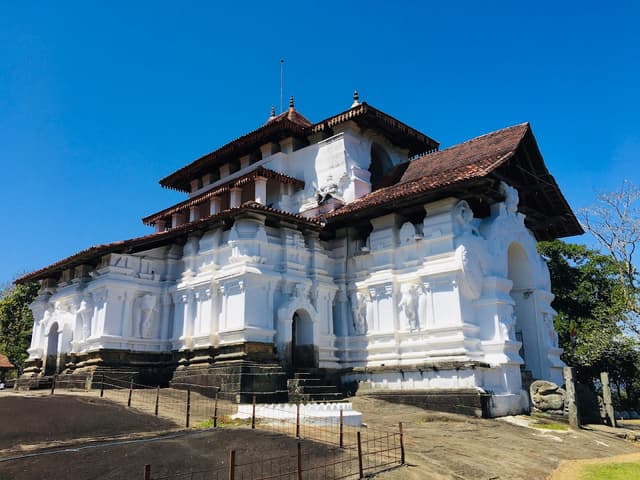
Sri Lankathilake Rajamaha Viharaya
@ravinkavish
Sri Lankathilake Rajamaha Viharaya, located in the historic town of Kandy, is an ancient Buddhist temple rich in history and architectural beauty. This serene temple is known for its impressive structure, which features intricate carvings, a large Buddha statue, and a stunning view of the surrounding hills and countryside. Its peaceful ambiance makes it a great spot for those interested in Sri Lanka’s religious heritage and architectural marvels.
Dating back to the 14th century, Sri Lankathilake Rajamaha Viharaya was built by King Parakramabahu VI and is one of the most significant temples in the region. It is also a great place to learn about Sri Lanka’s rich cultural and spiritual traditions.
**Pro tip:** While visiting the temple, take time to explore the surrounding area, which offers picturesque views and a tranquil atmosphere perfect for reflection and relaxation. The temple is best enjoyed during early morning or late afternoon when the weather is cooler, and the crowds are fewer.

Details
Day 4-5
Ella – A Hiker’s Paradise
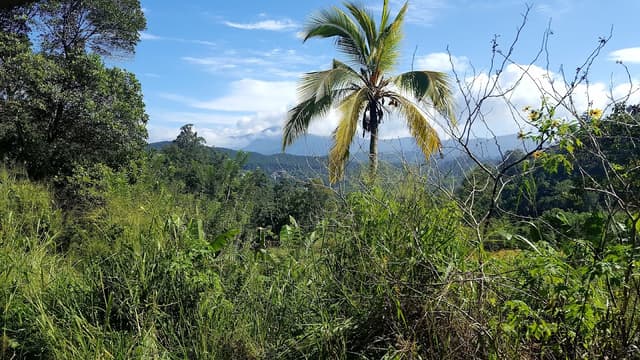
Ella
@ravinkavish
Ella, a charming village in Sri Lanka's hill country, is a paradise for travelers seeking stunning views, outdoor adventures, and a laid-back vibe. Surrounded by misty mountains, lush tea plantations, and cascading waterfalls, Ella offers a perfect blend of natural beauty and cultural richness.
The iconic **Nine Arches Bridge**, a colonial-era marvel, is a favorite spot for photography, especially when the train winds its way through the lush greenery. The trek to **Ella Rock** rewards you with panoramic views, while the shorter climb up **Little Adam’s Peak** is perfect for beginners, offering equally mesmerizing vistas.
Ella is also a hub for tea lovers. Visit the **Halpewatte Tea Factory** to learn about Sri Lanka’s world-renowned tea industry. For history enthusiasts, the nearby **Ravana Ella Falls** and **Ravana Cave** are linked to the epic Ramayana, adding a touch of mythology to your journey.
**Pro tip:** Plan your hike early in the morning for the best weather and views. Afterward, relax with a cup of locally grown tea or enjoy the lively cafes and restaurants that line the streets of Ella town.

Details
Ella is the place to go for some adventure! Take a
hike to Ella Rock, enjoy the stunning view from Nine Arches Bridge,
and explore the peaceful Ravana Falls. After your hikes, relax in one of
the many cozy cafés with a view of the hills.
Tip: Catch the sunrise from Little Adam's Peak if you’re an
early riser—it’s totally worth the effort!
Entrance Fee:
Ella Rock : 1000LKR
Nil Diya Pokuna : 3500LKR
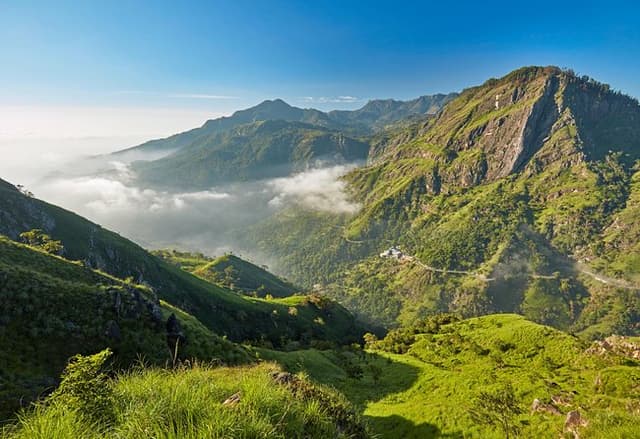
Little Adam's Peak
@ravinkavish
Little Adam’s Peak, located just outside the town of Ella, is one of the most popular and accessible hikes in Sri Lanka’s hill country. Standing at 1,141 meters, it offers stunning panoramic views without the strenuous climb of nearby **Ella Rock**. The hike is relatively easy and takes around 1-2 hours, making it perfect for travelers of all fitness levels, including families and those with limited hiking experience. The trail to the summit begins near the town of Ella, with a well-marked path that takes you through tea plantations and rolling hills. Along the way, you’ll pass charming rural villages, beautiful farmland, and dense forests, providing a peaceful and scenic backdrop. The final climb to the top is a series of stone steps, and once you reach the summit, you’re rewarded with breathtaking views of the surrounding valley, the distant **Ella Rock**, and the **Sri Lankan plains** stretching out below. **Best time to visit:** Like **Ella Rock**, the best time to hike **Little Adam’s Peak** is during the **dry season**, from **December to March**. This is when the weather is most favorable, with clear skies and cooler temperatures. Avoid visiting during the **rainy season**, especially in **May** and **October**, as the trails can become slippery and difficult to navigate. **Pro tip:** To avoid the crowds, it’s a great idea to start your hike early in the morning, ideally before sunrise, when the views are even more spectacular and you can enjoy the tranquility of the surroundings. Be sure to bring water and wear comfortable footwear, as the trail is well-maintained but can still be challenging in places.

Details
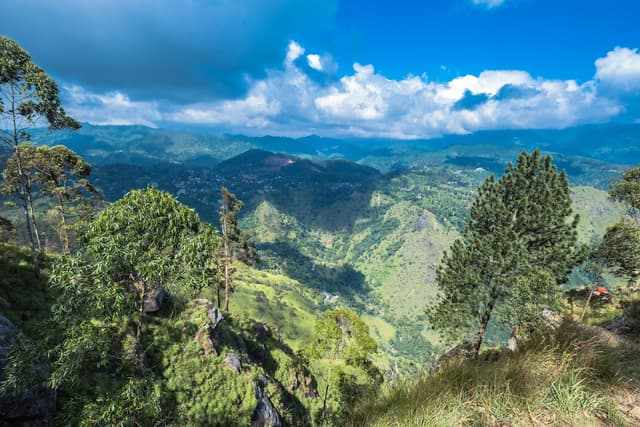
Ella Rock
@ravinkavish
Ella Rock, located in the picturesque town of Ella in Sri Lanka’s southern hill country, is one of the most iconic hiking destinations in the region. Standing at 1,041 meters, it offers some of the most breathtaking panoramic views of lush green valleys, tea plantations, and distant mountain ranges. The hike to the summit is a must-do for adventure seekers and nature lovers visiting Ella.
The trek to Ella Rock starts from the town of Ella, and the journey takes you through tea plantations, dense forests, and rural villages. The path is moderately challenging, and it usually takes about 3-4 hours to reach the top, depending on your pace. Along the way, you'll be treated to stunning vistas, with plenty of opportunities to pause for photos and enjoy the peaceful surroundings. At the summit, you’re rewarded with incredible views of Ella Gap, the southern plains of Sri Lanka, and on clear days, even the distant coastline.
The best time to hike **Ella Rock** is during the **dry season**, from **December to March**, when the weather is typically dry and the views are clear. It’s advisable to avoid hiking during the **rainy season**, especially **May** and **October**, when the trail can become slippery and the weather unpredictable.
**Pro tip:** If you want a more immersive experience, try to start the hike early in the morning to catch the sunrise. Be sure to wear sturdy footwear, as the trail can be uneven in places, and bring plenty of water. The hike is a great way to experience the natural beauty of Sri Lanka’s hill country, and for those seeking a bit more of a challenge, combining this hike with a visit to **Little Adam’s Peak** for a gentler climb is a fantastic option.

Details
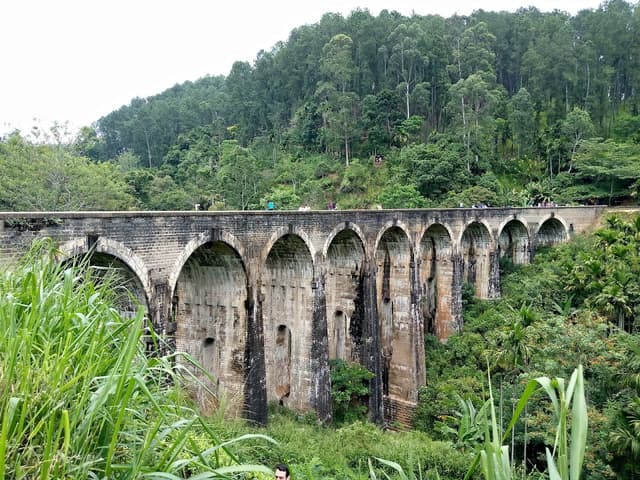
Nine Arches Bridge
@ravinkavish
Nine Arches Bridge is one of Sri Lanka’s most iconic landmarks, located near the town of Ella in the central highlands. Built during the British colonial era in the 1920s, this stunning bridge spans a deep valley surrounded by lush greenery and tea plantations. The bridge is 91 meters long and stands at 24 meters above the ground, with nine graceful arches giving it its name.
The Nine Arches Bridge is a marvel of engineering and has become a popular spot for both tourists and photographers, offering breathtaking views of the surrounding hills and valleys. The bridge is located along the railway line that connects Kandy to Badulla, and it’s a popular spot for watching the famous trains that pass through, creating a perfect photo opportunity.
The best time to visit Nine Arches Bridge is during the **dry season** from **December to March**, when the weather is stable and clear, offering perfect visibility for photography. **May** and **October** can bring heavy rainfall, which may make the area slippery and affect visibility.
**Pro tip:** The best views of the bridge can be captured from the nearby hills, which are easily accessible by a short hike. If you want to catch a train crossing the bridge, check the train schedule ahead of time, as it’s a popular spot for train enthusiasts and photographers.

Details
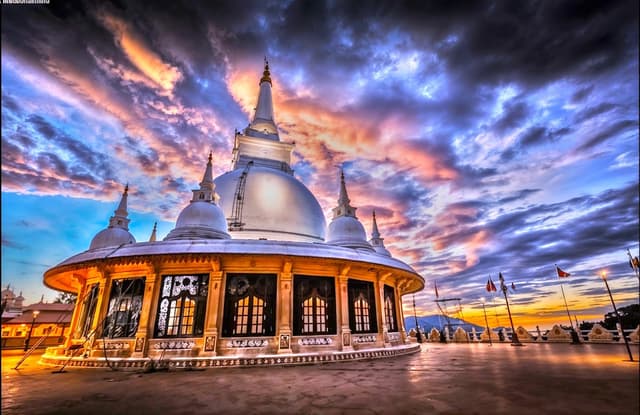
Mahamevnawa Buddhist Monastery
@ravinkavish
Mahamevnawa Buddhist Monastery near Ella is a serene spiritual retreat nestled in the misty hills of Sri Lanka's central highlands. This peaceful monastery is part of the renowned Mahamevnawa network of monasteries, established in 1999 to revive and propagate the teachings of the Buddha. It serves as a tranquil space for meditation, mindfulness, and learning, attracting devotees and curious travelers alike.
The monastery features simple, elegant architecture harmonizing with the natural surroundings, with quiet pathways, lush greenery, and an atmosphere of calm. Visitors can participate in meditation sessions, attend Dhamma talks, or simply take a reflective stroll around the grounds. The serene environment is ideal for those seeking inner peace or a break from the bustle of everyday life.
**Pro tip:** Dress modestly and respectfully when visiting. If you’re new to meditation or Buddhist practices, the monks are often welcoming and happy to guide you. It's a wonderful spot to experience Sri Lanka’s spiritual heritage amidst the beauty of Bandarawela’s hills.

Details
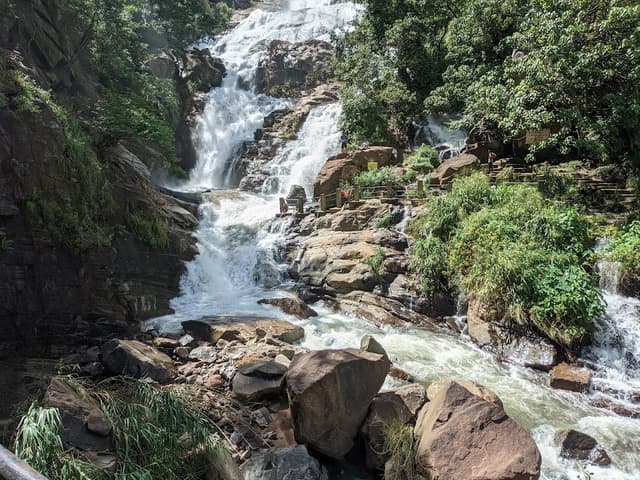
Ravana Waterfall
@ravinkavish
Ravana Waterfall, located near the town of Ella in Sri Lanka's southern hill country, is one of the most famous and beautiful waterfalls in the region. Standing at around 25 meters in height, this waterfall is a popular stop for travelers exploring Ella and the surrounding areas. Named after the mythical king Ravana, the falls are steeped in local legends, and are believed to be linked to the ancient story of the Ramayana.
The waterfall is a multi-step cascade, with water flowing down from the mountains, creating a scenic and serene environment. The surrounding area is lush with greenery, making it an ideal spot for a short walk or picnic. The base of the falls offers a cool pool where you can enjoy a refreshing swim, although caution is needed during the rainy season as the water can rise quickly.
The best time to visit Ravana Waterfall is during the **dry season**, from **December to March**, when the weather is more stable and the waterfall is at its most picturesque. The **rainy season**, particularly **May** and **October**, can bring heavy rainfall, making the path slippery and the water flow strong.
**Pro tip:** If you're visiting, take the time to explore the surrounding area, as the waterfall is part of a larger natural attraction. The nearby Ravana Cave and the breathtaking views of the Ella Gap are also worth a visit. Be sure to carry a camera to capture the beauty of the falls and its surroundings, especially if you're lucky enough to see the falls in full flow after some rain.

Details
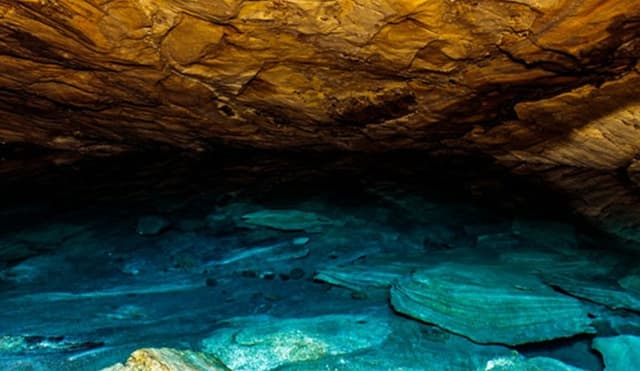
Blue Water Cave Pond (Nil Diya Pokuna)
@ravinkavish
Blue Water Cave Pond (Nil Diya Pokuna), located in the Knuckles Mountain Range, is a hidden gem surrounded by dense forest and rugged terrain. This crystal-clear pond, nestled in a serene cave, is known for its striking blue water, which gives it the name "Nil Diya Pokuna," meaning "Blue Water Pond." The water, fed by natural springs, remains cool and refreshing throughout the year, creating a peaceful environment for visitors.
The journey to Nil Diya Pokuna requires a moderate hike through the forest, making it an excellent destination for nature lovers and those seeking an off-the-beaten-path adventure. The pond itself is tranquil and offers a mesmerizing view of the surrounding greenery. It's also a great spot for photography, as the vibrant blue water contrasts beautifully with the lush vegetation and rocks.
The best time to visit Nil Diya Pokuna is during the **dry season**, from **December to March**, when the weather is more stable, and the path to the cave is easier to navigate. **May** and **October** can be challenging, as the rainy season can make the trail slippery and difficult to hike.
**Pro tip:** Since the area is remote and not as developed for tourism, it’s advisable to bring plenty of water, wear sturdy footwear, and be prepared for a hike through a forested trail. This serene spot is perfect for those looking to escape the crowds and experience the natural beauty of Sri Lanka's hill country.

Details
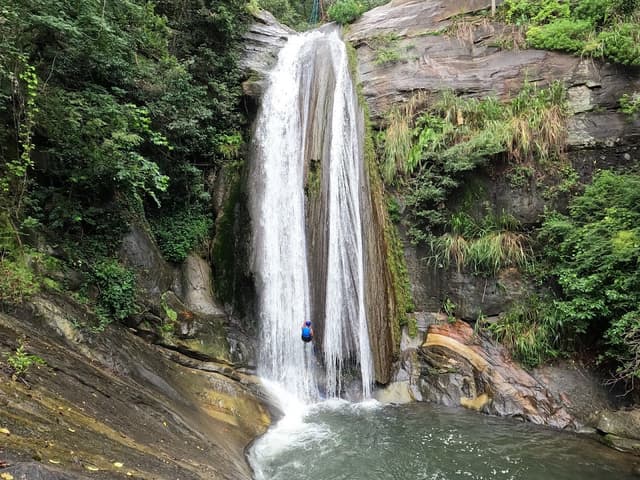
Pallewela Waterfall
@ravinkavish
Pallewela Waterfall, located in the village of Pallewela near Kegalle in Sri Lanka, is a serene and lesser-known waterfall that offers a peaceful retreat for nature lovers. The waterfall is surrounded by lush greenery and a vibrant forest, providing a picturesque setting for hiking and photography. The water cascades down in a single stream into a natural pool below, which is perfect for a refreshing swim.
The best time to visit Pallewela Waterfall is during the dry season, from **December to March**, when the weather is more stable, and the water flow is gentle enough for a safe swim. The area is accessible by a short trek through scenic landscapes, making it an ideal spot for travelers who enjoy a bit of adventure combined with tranquility.
**Pro tip:** It's best to avoid visiting in **May** and **October**, as these months often bring heavy rains that can make the paths slippery and the water flow stronger. If you’re looking for a peaceful, off-the-beaten-path waterfall experience, Pallewela is a great destination!

Details
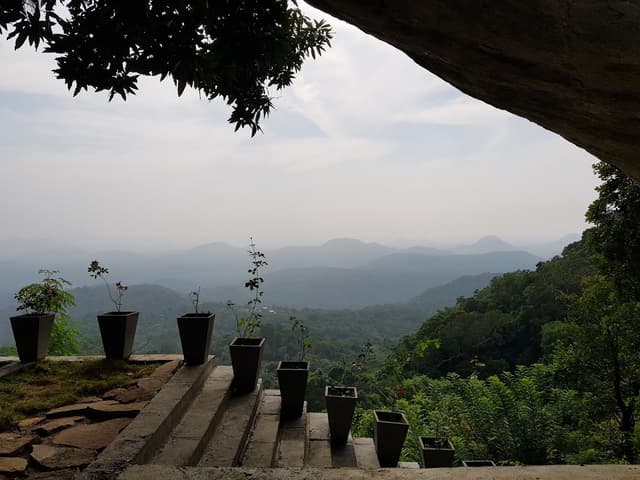
Rakkiththa Kanda Rajamaha Viharaya
@ravinkavish
**Rakkiththa Kanda Rajamaha Viharaya** is an ancient Buddhist temple located in the **Ratnapura District** of Sri Lanka, nestled in the lush greenery of the Sabaragamuwa Province. The temple sits atop **Rakkiththa Kanda**, which translates to "the mountain of the guardian," offering stunning panoramic views of the surrounding hills and valleys. This peaceful temple, with its rich history, is believed to have been a significant site for meditation and worship for centuries. It is often less visited by tourists, making it a hidden gem for those looking for solitude and a deep connection with Sri Lanka’s spiritual heritage.
The temple complex features ancient ruins, beautiful stone carvings, and an impressive stupa. It’s not only a place of worship but also a serene retreat for those interested in Sri Lanka’s Buddhist history. The hike to the temple is a bit challenging, but the scenic beauty and the calm atmosphere at the top are well worth the effort.

Details
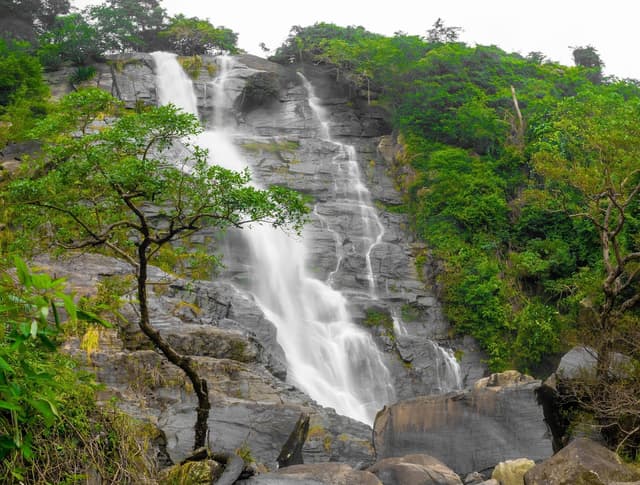
Visari Water Falls
@ravinkavish
Devil's Staircase View Point, located in Sri Lanka's central highlands, is a thrilling destination for adventure seekers and nature lovers. Positioned along the infamous Devil's Staircase trail, this viewpoint offers breathtaking panoramas of lush valleys, cascading waterfalls, and tea-covered slopes. The rugged terrain and misty surroundings create an unforgettable atmosphere for travelers who crave a touch of wilderness.
Reaching the viewpoint involves a challenging yet rewarding hike or off-road drive through winding paths, making the journey as memorable as the destination. It’s a favorite among hikers, photographers, and thrill-seekers exploring the highlands.
**Pro tip:** Early morning visits provide the clearest views, while the rainy season (April to September) enhances the lush beauty of the area. Pair this experience with a stop at Bambarakanda Falls or a trek through Ohiya for a full day of adventure. Devil's Staircase View Point promises an awe-inspiring escape into Sri Lanka's untamed beauty.

Details
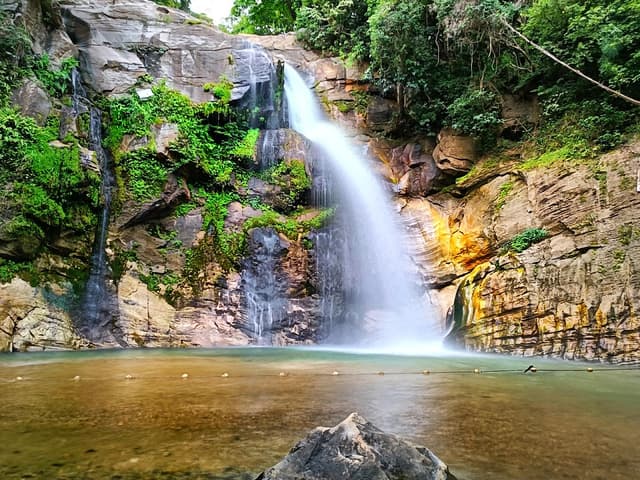
Ellewala Waterfall
@ravinkavish
Ellewala Waterfall, located near Wellawaya in Sri Lanka’s beautiful hill country, is a stunning, serene waterfall perfect for nature lovers seeking a peaceful escape. This 30-meter waterfall cascades down a rocky cliff, surrounded by lush greenery and dense forest. The waterfall’s tranquil pool at the base is ideal for a refreshing swim, especially in the dry months from December to March when the flow is gentler and safer for a dip.
To reach Ellewala, visitors can enjoy a short trek through picturesque tea plantations and forest paths, making it an excellent destination for hiking and photography. The natural beauty of the area provides a perfect backdrop for a peaceful retreat or picnic.
**Pro tip:** The best time to visit is from **December to March**, when the weather is dry, and the water flow is more inviting. Avoid visiting during **May** and **October**, which are typically the wettest months in the hill country and can result in stronger currents and slippery paths. If you’re in the Wellawaya area, don’t miss this hidden gem of nature!

Details
Day 6
Galle – Colonial Era
Galle
@ravinkavish
Galle, located on Sri Lanka’s southwestern coast, is a historic city known for its charming blend of colonial architecture, vibrant culture, and coastal beauty. The **Galle Fort**, a UNESCO World Heritage site, is the city's most famous attraction, offering cobblestone streets, old Dutch buildings, and panoramic views of the Indian Ocean. The fort was built by the Portuguese in the 16th century and later fortified by the Dutch, reflecting a rich colonial past.
Beyond the fort, Galle is home to beautiful beaches, including **Unawatuna Beach**, a popular spot for swimming and snorkeling. The city also offers bustling markets, boutique shops, and cafes where you can experience local culture and cuisine.
**Pro tip:** Take a walk along the ramparts of Galle Fort at sunset for a beautiful view of the ocean and the city’s skyline.

Details
Galle is a historic gem on Sri Lanka’s southwest coast, blending colonial architecture with vibrant street life. The town's main highlight is the Galle Fort, a UNESCO World Heritage Site that dates back to the 16th century. Walk along its cobblestone streets, visit the Galle Lighthouse, and explore old Dutch buildings that now house boutiques, cafes, and galleries.
Galle offers a rich cultural experience, with spots like the National Museum and the Meeran Mosque inside the Fort. The surrounding beaches, such as Unawatuna and Mihiripenna, provide the perfect spot to unwind after a day of exploring.
With its mix of history, culture, and scenic coastal views, Galle is a must-visit destination for anyone traveling around Sri Lanka.
Entrance Fee:
Black Fort : 1000LKR
National Museum Galle - 550LKR
Maritime Museum - 1800LKR
A Walk in Galle Fort:
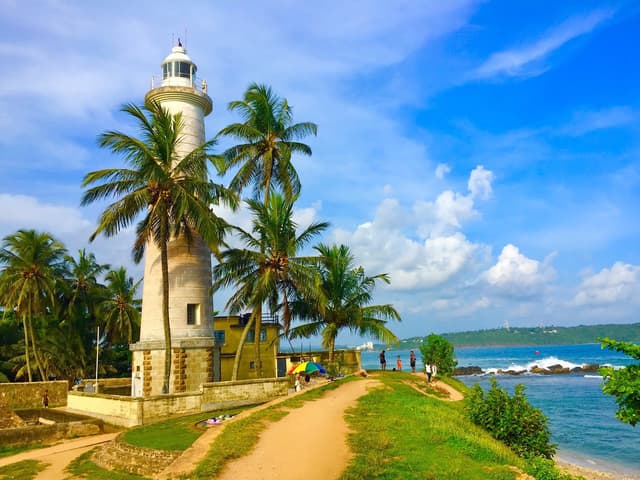
Galle Dutch Fort
@ravinkavish
The Galle Dutch Fort, a UNESCO World Heritage Site, is a captivating blend of history, culture, and coastal beauty. Built by the Portuguese in 1588 and later fortified by the Dutch in the 17th century, this iconic landmark is a testament to Sri Lanka's colonial past and architectural brilliance. The fort's massive stone walls have withstood centuries of weather and waves, offering stunning views of the Indian Ocean.
Inside the fort, you'll find cobblestone streets lined with colonial-era buildings, charming boutiques, art galleries, and cafes. Highlights include the Galle Lighthouse, the Dutch Reformed Church, and the Maritime Museum. As you wander, the mix of European and South Asian influences becomes evident in the architecture and atmosphere.
**Best time to visit:** Visit in the late afternoon to enjoy cooler weather and a magical sunset over the ramparts. Exploring in the evening is also delightful as the fort comes alive with lights and a vibrant atmosphere.
The Galle Dutch Fort is a must-visit destination for history enthusiasts, architecture lovers, and anyone seeking to experience the charm of Sri Lanka's southern coast.

Details
Galle Fort Clock Tower
@ravinkavish
The Galle Fort Clock Tower is an iconic feature of the Galle Dutch Fort, standing tall since 1883 as a tribute to Dr. Peter Daniel Anthonisz, a respected local surgeon. Its sturdy, four-sided stone structure reflects colonial architectural influences and serves as a striking landmark within the fort. Positioned near the main entrance, the clock tower offers a glimpse into the fort's history while adding to its timeless charm. A visit to this historic tower provides a deeper appreciation of the rich heritage preserved within Galle Fort.

Details
Galle Lighthouse
@ravinkavish
The Galle Lighthouse, standing gracefully on the southern edge of the Galle Dutch Fort, is the oldest lighthouse in Sri Lanka, originally built in 1848. The current structure, rebuilt in 1939 after a fire, rises 26.5 meters and is an iconic feature of the fort’s skyline. Surrounded by palm trees and overlooking the Indian Ocean, it offers a picturesque view that draws photographers and visitors alike.
Positioned near the ramparts, the lighthouse also provides a serene spot to relax while enjoying the sea breeze and watching local fishing boats. It's a must-see highlight when wandering through the historic streets of Galle Fort.

Details
Meeran Mosque, Galle Fort.
@ravinkavish
Meeran Mosque in Galle Fort is a stunning example of Islamic architecture infused with colonial and South Asian influences. Built in the early 20th century, this historic mosque stands out with its pristine white façade, elegant domes, and arched windows, blending harmoniously with the surrounding fort's colonial buildings.
The mosque is a place of worship and a cultural landmark, symbolizing the rich diversity within the fort's walls. Its serene interiors and tranquil atmosphere make it a peaceful spot to visit, while the view from its surroundings adds to the charm.
**Pro tip:** Respect the sanctity of the mosque by dressing modestly, and visit during non-prayer times for a quieter experience.

Details
Dutch Reformed Church
@ravinkavish
The Dutch Reformed Church, also known as **Groote Kerk**, is a historic gem within the Galle Dutch Fort, dating back to 1755. Built by the Dutch, this church is a striking example of colonial-era architecture, with its gabled roof, simple whitewashed walls, and antique wooden pews. Its floor, paved with gravestones from the 17th and 18th centuries, holds stories of the past, while the church's interior houses an impressive pulpit carved from calamander wood.
Surrounded by the tranquil atmosphere of the fort, this well-preserved landmark offers a glimpse into Sri Lanka's colonial heritage and a moment of peace amidst the bustling streets. It's a must-visit for history enthusiasts and architecture lovers.

Details
All Saints' Church, Galle - Church of Ceylon
@ravinkavish
All Saints' Church in Galle, located within the historic Galle Fort, is a beautifully preserved Anglican church consecrated in 1871. Built in a striking Gothic Revival style, the church features intricate stained glass windows, high vaulted ceilings, and finely crafted wooden pews, showcasing British colonial influence.
Nestled amidst the cobbled streets of the fort, it stands as a testament to Sri Lanka's multicultural history and architectural diversity. Whether you're drawn by its serene ambiance or its historical significance, All Saints' Church offers visitors a glimpse into the spiritual and cultural legacy of Galle Fort.

Details
British Queen's House
@ravinkavish
The **British Queen’s House**, located within the Galle Fort, is a colonial-era building that reflects the architectural elegance of the British period in Sri Lanka. It earned its name during the time of British rule when it served as the official residence for British governors and high-ranking officials visiting the southern region. The name "Queen’s House" was commonly used to denote official government residences associated with the British monarchy in their colonies.
Today, the building stands as a historical relic, showcasing classic British colonial design with arched verandas, high ceilings, and well-crafted woodwork. Although not open to the public, its exterior is a fascinating sight for history enthusiasts exploring the fort.
**Pro tip:** Look for this landmark while walking along the fort’s charming streets—it’s near other key attractions like the lighthouse and the ramparts.

Details
Sri Sudharmalaya Buddhist Temple
@ravinkavish
The Sri Sudharmalaya Buddhist Temple, located within the Galle Fort, is a serene spiritual retreat that contrasts beautifully with the colonial surroundings. This small but significant temple, established in the 19th century, serves as a place of worship and meditation for the local community. Its simple architecture, featuring a peaceful stupa and a tranquil courtyard, radiates calmness amidst the fort's bustling streets.
Visitors are welcome to explore its sacred spaces, admire the Buddha statues, and experience a moment of quiet reflection. The temple's unique location by the fort ramparts offers stunning views of the ocean, making it a peaceful stop during your Galle Fort journey.

Details
Lloyd Naval Signal Station
@ravinkavish
The Lloyd Naval Signal Station, now in ruins, is a fascinating piece of history for those interested in Sri Lanka’s colonial past and maritime heritage. Originally built in the 19th century by the British to oversee the harbor of Galle, the station was crucial for communication between ships and the colonial authorities, signaling naval and merchant vessels as they approached the port.
Today, the remains of the signal station, which stand on the fort’s ramparts, offer a glimpse into the strategic importance of Galle Fort during the British colonial era. The views from the site are still breathtaking, with the ruins offering a historic backdrop to the vibrant surroundings of the fort. Though the structure itself is now crumbling, its place in Sri Lanka’s naval history is undeniable, and it provides travelers with a chance to reflect on the island's colonial maritime past while enjoying the scenic beauty of the coast.

Details
Clippenberg Bastion
@ravinkavish
Clippenberg Bastion, located within the historic Galle Fort, is one of the fort's key defensive structures, offering a glimpse into the strategic military significance of the area during the colonial period. Built by the Dutch in the 17th century, the bastion was part of the fort’s extensive fortifications designed to protect the harbor and the town from naval attacks. It features thick stone walls and a commanding view of the sea, providing a prime vantage point for spotting enemy ships.
Today, the bastion is a peaceful spot within the fort, offering scenic views of the ocean and the bustling town of Galle. It's a great stop for history lovers and photographers, as the site combines colonial-era architecture with breathtaking views, making it a must-see for travelers exploring Galle Fort's rich history.

Details
Aeolus Bastion
@ravinkavish
Aeolus Bastion is one of the prominent bastions within Galle Fort, built by the Dutch during the 17th century as part of their efforts to fortify the town against foreign invasions. Named after Aeolus, the Greek god of winds, this bastion is strategically located along the fort's ramparts, offering expansive views of the Indian Ocean and the town of Galle.
Historically, the bastion was used as a lookout point for spotting approaching ships, particularly during the colonial era when Galle was an important port for trade and military operations. Today, it stands as a well-preserved example of Dutch colonial military architecture. Visitors can explore its remains, enjoy the panoramic vistas, and appreciate the bastion’s role in Galle's rich history. It’s an excellent stop for travelers interested in both the fort’s past and the stunning coastal scenery.

Details
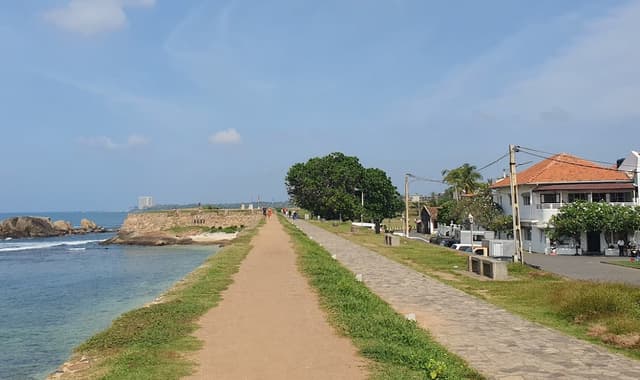
Triton di Slvar Bastion
@ravinkavish
The Triton Di Slvar Bastion, also known as the "Triton Bastion," is another historical feature of Galle Fort, built during the Dutch colonial era in the 17th century. As with other bastions in the fort, it was constructed for defense, designed to protect the fort and its harbor from attacks by sea. The name "Triton" likely refers to the ancient Greek god of the sea, symbolizing the bastion’s strategic position overlooking the ocean.
Though not as well-known as some of the other bastions, Triton Di Slvar Bastion offers visitors a quieter spot to reflect on the fort’s history. From here, you can enjoy panoramic views of the coastline, the bustling harbor, and the surrounding areas. As with other bastions in the fort, it serves as a reminder of Galle’s importance as a maritime hub during colonial times. Exploring the bastion provides insight into the fort's military significance while offering a peaceful place for travelers to appreciate the history and natural beauty of Galle.

Details
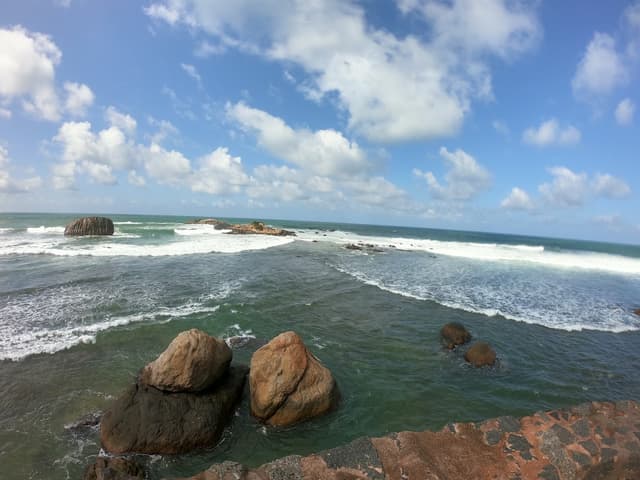
Sunset Watching Point Flagrock Bastion
@ravinkavish
Flagrock Bastion, located within Galle Fort, is one of the most popular spots for watching breathtaking sunsets over the Indian Ocean. Originally constructed by the Dutch in the 17th century as a part of the fort's defense system, Flagrock Bastion was strategically placed to keep watch over the surrounding seas and alert the fort's inhabitants to any approaching threats. The name "Flagrock" refers to the flagpole that once stood here, signaling the presence of ships.
Today, the bastion serves as an excellent viewing point, offering panoramic vistas of the ocean and the coastline. As the sun sets, the sky is painted with vibrant hues, making it a perfect spot for photographers and sunset lovers. The bastion is also a quieter corner of the fort, offering a peaceful place to relax and enjoy the stunning natural beauty of the surroundings.
For travelers exploring Galle Fort, Flagrock Bastion is a must-visit for its historical significance and its incredible view, especially at sunset. It’s a reminder of the fort's strategic military importance, while also offering a serene escape to take in the beauty of the sea and sky.

Details
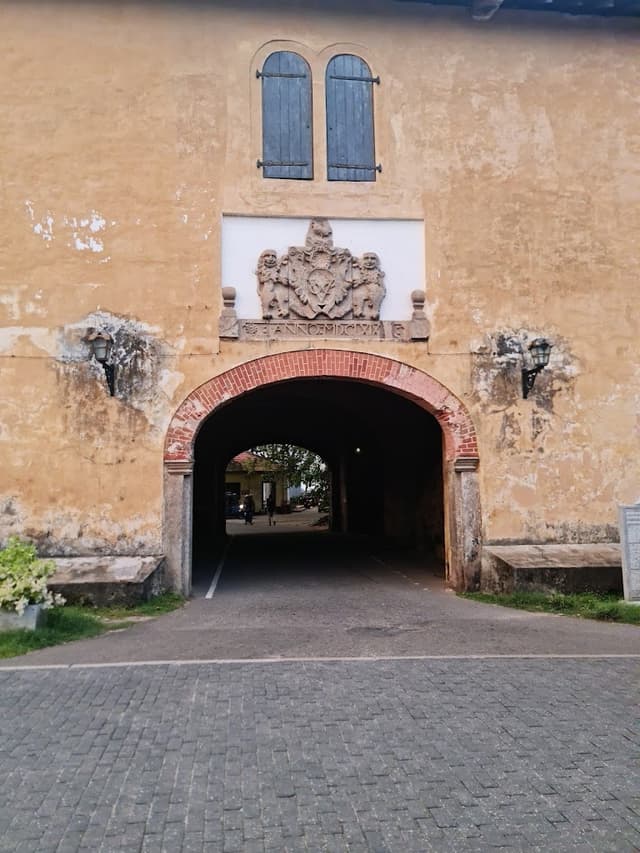
Fort Entrance (Slvar Gate)
@ravinkavish
The Fort Entrance, also known as the **Slvar Gate**, is the main entry point to the historic Galle Fort, serving as a gateway between the vibrant city and the fort’s well-preserved colonial heritage. This grand entrance was originally designed by the Dutch during their occupation in the 17th century to provide access to the fortified town while maintaining security.
The **Slvar Gate** is an architectural gem, with its large archway flanked by sturdy walls, showcasing the strength of the Dutch military engineering. The gate has been a witness to centuries of history, from the Dutch colonial era to the British period and beyond. Visitors can admire the blend of European and local architectural influences, with intricate carvings and stonework that tell the story of Galle Fort's strategic importance as a trading hub and military stronghold.
Today, the Fort Entrance remains an iconic landmark for travelers, marking the transition from the bustling town of Galle to the quieter, more historical atmosphere within the fort’s walls. As you pass through, you'll experience the aura of the past while walking in the footsteps of traders, soldiers, and colonial settlers who once passed through this same entrance. It’s a perfect spot to begin your exploration of the fort’s rich history and fascinating architecture.

Details
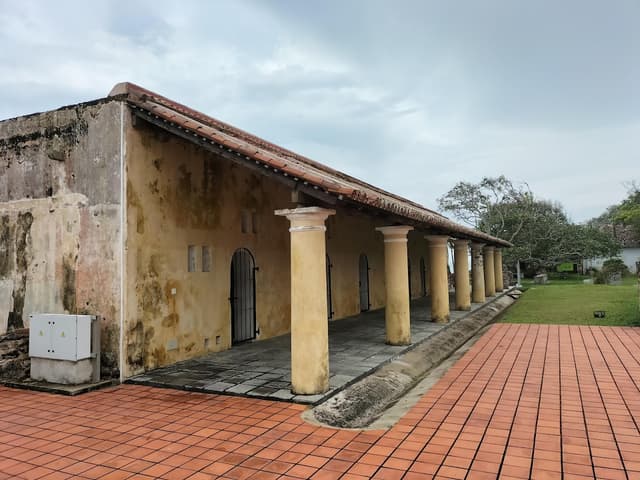
Black Galle Fort - Zwart Bastion
@ravinkavish
Zwart Bastion, also known as the Black Bastion, is one of the key defensive structures in Galle Fort, built by the Dutch in the 17th century. The name "Zwart" translates to "black" in Dutch, which could refer to the darker stone used in its construction or its position as a prominent fortification along the fort's ramparts. Like other bastions in the fort, Zwart Bastion was designed to protect the port of Galle from naval attacks and served as a strategic lookout point.
Today, the Zwart Bastion offers a fascinating insight into the military architecture of the Dutch colonial period. It provides stunning views of the ocean, the Galle harbor, and the surrounding town, making it a great spot for history enthusiasts and travelers looking to appreciate the historical and scenic beauty of the area. The bastion, while not as well-known as some other parts of the fort, remains an integral part of Galle’s fortifications and is a reminder of the town’s strategic importance during the colonial era.

Details
1873 Art Gallery Cafe
@ravinkavish
1873 Art Gallery Cafe, nestled within the historic Galle Fort, is a delightful blend of art and culinary charm. Housed in a colonial-era building, the café offers a cozy ambiance with rustic interiors and a touch of modern elegance. The space doubles as an art gallery, showcasing works by local and international artists, making it a cultural hotspot for visitors.
Whether you’re here to admire the artwork or savor a cup of Sri Lankan tea, the café provides a relaxing retreat amid the bustling fort. Its unique vibe makes it a favorite for travelers looking to unwind and soak in the artistic atmosphere.
**Pro tip:** Pair your visit with a stroll around the fort's galleries and boutiques for a full cultural experience.

Details
National Museum Galle
@ravinkavish
The National Museum of Galle, located within the Galle Fort, is a treasure trove of history and culture, housed in a beautiful Dutch-era building dating back to 1656. This museum provides a fascinating glimpse into Sri Lanka’s past, featuring exhibits that highlight the region's maritime history, colonial influence, and traditional crafts.
Artifacts on display include ancient tools, weaponry, trade goods, and intricately carved wooden objects from the Kandyan era. The museum also showcases items reflecting the blend of cultures that shaped Galle, such as Dutch porcelain and Sri Lankan masks.
**Pro tip:** Visit early to enjoy the museum’s quiet atmosphere and take time to explore the building’s colonial architecture, which is a piece of history itself.

Details
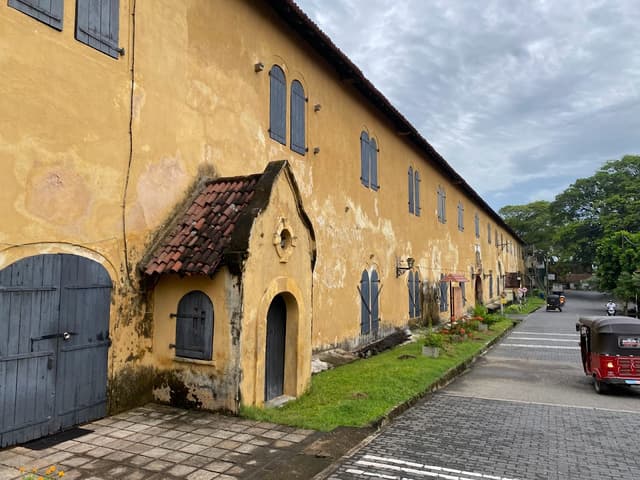
Maritime Museum
@ravinkavish
The Maritime Museum in Galle is a fascinating dive into Sri Lanka’s seafaring history, located within the UNESCO-listed Galle Fort. Housed in a restored colonial warehouse from the 17th century, the museum vividly showcases the island’s maritime heritage, highlighting its connections to trade, exploration, and naval history. It is the only museum in Sri Lanka dedicated solely to maritime culture and history.
Inside, visitors can explore a collection of artifacts, including ancient shipwrecks, navigational equipment, maps, and fishing tools that reflect the maritime activities of the Dutch, Portuguese, and British colonial eras. The museum also highlights the region's rich biodiversity with exhibits on coral reefs and marine life, emphasizing the importance of coastal conservation.
The building itself, with its thick walls and vaulted ceilings, is a testament to Dutch colonial architecture. A visit to the Maritime Museum is perfect for history enthusiasts and curious travelers wanting to uncover the stories of Galle’s port, which was once a bustling hub in the Indian Ocean trade network.

Details
Galle is Not Just The Dutch Fort:
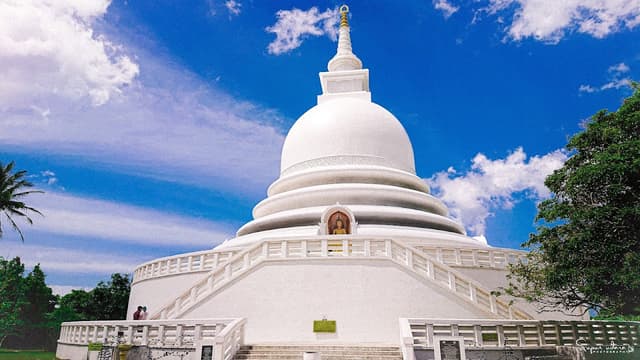
Japanese Peace Pagoda - Rumassala
@ravinkavish
The Japanese Peace Pagoda, located in the tranquil area of Rumassala near Unawatuna, is a stunning landmark that offers both spiritual solace and sweeping views of the Indian Ocean. Built by Japanese monks in 2005, the pagoda stands as a symbol of peace and harmony, reflecting the spirit of Buddhist teachings.
The pagoda's design is simple yet majestic, with its white dome standing out against the lush greenery and the blue ocean backdrop. Visitors can enjoy a peaceful atmosphere, perfect for meditation or simply appreciating the surrounding natural beauty.
**Best time to visit:** The best time to visit the Japanese Peace Pagoda is during the early morning or late afternoon when the weather is cooler, and the views are spectacular. The walk up to the pagoda is short but scenic, making it a great stop for travelers near Unawatuna or Galle.
If you're in the area, the Japanese Peace Pagoda is a serene and culturally rich spot worth experiencing.

Details
Unawatuna Beach
@ravinkavish
Unawatuna Beach, located just a few kilometers from Galle, is one of Sri Lanka’s most famous and idyllic coastal destinations. Known for its golden sands, calm turquoise waters, and lush palm-fringed shoreline, it’s a perfect spot for swimming, sunbathing, and snorkeling. The beach also has a lively vibe with plenty of beachfront cafes, bars, and shops catering to travelers.
Nearby, you can explore the iconic **Jungle Beach** or visit the **Peace Pagoda**, which offers stunning panoramic views of the coastline. Unawatuna is also known for its vibrant nightlife, making it a favorite for travelers seeking both relaxation and entertainment.
**Pro tip:** Visit early morning for a serene experience, and don’t miss the sunset—it’s magical here!

Details
Mihiripenna Beach
@ravinkavish
Mihiripenna Beach, located near Unawatuna, is a tranquil escape known for its shallow turquoise waters and natural rock pools. This hidden gem offers a quieter alternative to busier beaches, making it ideal for relaxing and enjoying the serene coastal beauty. The calm waters protected by a reef are perfect for swimming and snorkeling, with opportunities to spot colorful marine life.
The beach is fringed by swaying palm trees and a few laid-back cafes, providing a cozy setting to unwind. It’s a favorite spot for travelers seeking a peaceful seaside retreat away from the crowds.
**Pro tip:** Visit during low tide to explore the rock pools, and don’t forget your snorkeling gear for a closer look at the underwater world.

Details
Thalpe Beach
@ravinkavish
Thalpe Beach, located just south of Unawatuna, is a serene and less-crowded stretch of coastline known for its unique charm and natural beauty. The beach features a series of iconic rectangular rock pools carved into the reef during the colonial era, originally used for harvesting salt. These pools now serve as relaxing natural jacuzzis during low tide.
The soft golden sands and gentle waves make Thalpe a perfect spot for unwinding, while its laid-back vibe attracts travelers looking to escape the busier beaches nearby. A few boutique hotels and stylish cafes add to the beach’s quiet sophistication.
**Pro tip:** Time your visit with the low tide to experience the rock pools, and bring a camera—the setting is picture-perfect!

Details
Koggala Beach
@ravinkavish
Koggala Beach, located along Sri Lanka’s southern coast, is a pristine stretch of golden sands kissed by the turquoise waves of the Indian Ocean. Known for its natural beauty and calm surroundings, it’s perfect for long beach walks, swimming, and sunbathing. Koggala is also famous for its traditional **stilt fishermen**, a unique and photogenic sight symbolizing the region’s coastal heritage.
Close by, you’ll find the **Koggala Lake** and Martin Wickramasinghe Folk Museum, adding cultural and ecological experiences to your visit. With fewer crowds, Koggala offers a peaceful escape for travelers seeking tranquility.
**Pro tip:** Visit early morning to catch the stilt fishermen in action and enjoy a serene start to your day.

Details
Yatagala Raja Maha Viharaya
@ravinkavish
Yatagala Raja Maha Viharaya, a serene Buddhist temple near Unawatuna, is a hidden gem steeped in history. Believed to be over 2,300 years old, this ancient site was built during the Anuradhapura era and is nestled among massive granite boulders, creating a tranquil and unique atmosphere. The temple is said to have once been blessed by a visit from King Devanampiyatissa, tying it to the origins of Buddhism in Sri Lanka.
The temple complex features a stunning reclining Buddha statue, age-old frescoes, and an atmosphere of deep peace. Surrounded by lush greenery, it’s a perfect place for meditation and reflection.
**Pro tip:** Visit early in the morning to enjoy the quiet ambiance, and take some time to admire the panoramic views from the temple grounds.

Details
Pilana Puraana Sri Maha Viharaya
@ravinkavish
Pilana Puraana Sri Maha Viharaya, located in the village of Pilana in the southern part of Sri Lanka, is a tranquil and lesser-known Buddhist temple with a rich history. This sacred site is revered by locals for its spiritual significance and serene environment. The temple is believed to have been established several centuries ago, though detailed historical records are sparse.
The temple complex features a beautiful stupa, statues of the Buddha, and painted murals depicting various Buddhist teachings and the life of the Buddha. Surrounded by lush greenery and peaceful landscapes, it offers visitors a quiet space for meditation and reflection.
**Pro tip:** Pilana Puraana Sri Maha Viharaya is an excellent spot for those looking to experience authentic local culture and spirituality in a peaceful, less touristy setting. The natural surroundings and the temple’s historical charm make it a hidden gem for travelers seeking tranquility.

Details
End Your Trip in Colombo
Colombo – The City Awakens

Colombo
@ravinkavish
Colombo, Sri Lanka’s vibrant capital, is a dynamic blend of modernity and history, offering travelers a unique mix of culture, cuisine, and charm. This bustling metropolis is home to a diverse array of attractions, from ancient temples and colonial-era buildings to contemporary skyscrapers and chic cafes.
Explore the historic Fort area, where Dutch and British colonial architecture meet modern developments, or stroll along Galle Face Green, a seaside promenade perfect for catching sunsets. For those interested in culture, the Gangaramaya Temple and Independence Square showcase the city's rich heritage. Colombo also boasts lively markets like Pettah, where you can shop for everything from spices to souvenirs.
Pro tip: Colombo is a great starting or ending point for your Sri Lankan journey, with convenient access to the airport. Plan to spend at least a day exploring its highlights and indulging in the local cuisine, especially at the trendy restaurants and street food stalls scattered across the city.

Details
Next up: Colombo, Sri Lanka’s vibrant capital! Once
you’ve rested, it’s time to explore. Colombo’s buzzing streets, colonial sites mixed with modern infrastructure view from the Galle Face Green, and delicious food markets will give
you a taste of Sri Lanka’s urban energy. It’s also a great place to shop for
unique souvenirs, from handcrafted jewelry to spices but watch out for fake jewelry scams!
Entrance Fee:
Gangaramaya Temple : 400LKR
Colombo National Museum : 1200LKR
Colombo Lotus Tower : 20USD
City Surf
Must See
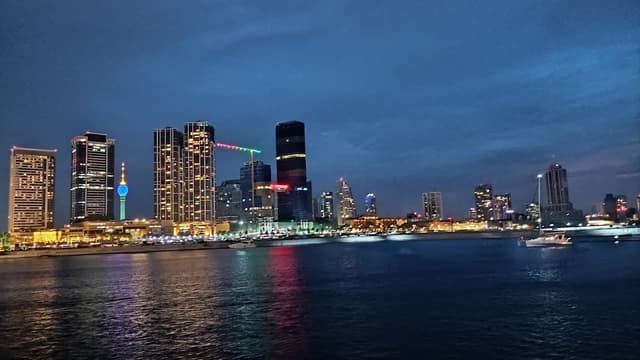
Port City View Point
@ravinkavish
Port City Colombo is a futuristic urban development project transforming Colombo's coastline into a world-class financial and lifestyle hub. Built on reclaimed land adjacent to the city center, this ambitious project represents Sri Lanka's vision for modernization and economic growth. The area blends sleek skyscrapers, luxury residences, and business hubs with green spaces, recreational areas, and a picturesque marina.
Although still under development, parts of Port City are open for public exploration. Visitors can enjoy the newly established walking paths, admire the stunning coastal views, and experience the blend of cutting-edge architecture with Colombo's vibrant energy.
Pro tip: Visit during the evening to enjoy the cool sea breeze and stunning sunset views over the Indian Ocean. Port City Colombo is perfect for travelers curious about the city’s modern transformation and those seeking a glimpse into the future of Sri Lanka’s urban landscape.

Details
Galle Face Green
@ravinkavish
Galle Face Green is a lively urban park stretching along Colombo’s coastline, offering breathtaking views of the Indian Ocean. Originally laid out in **1859** by Sir Henry Ward, the British Governor of Ceylon, this iconic promenade was once used for horse racing and recreational activities. Today, it’s a favorite gathering spot for locals and travelers alike, renowned for its stunning sunsets and relaxed atmosphere.
The open space is perfect for a leisurely stroll, flying kites, or enjoying street food from vendors selling local favorites like **isso wade** (prawn fritters). Nearby landmarks include the historic Galle Face Hotel and the striking Colombo Lotus Tower, making it a great starting point for exploring the city.
**Pro tip:** Visit in the late afternoon to enjoy the cool sea breeze, try some local snacks, and witness the bustling energy of Colombo’s residents unwinding by the sea.

Details
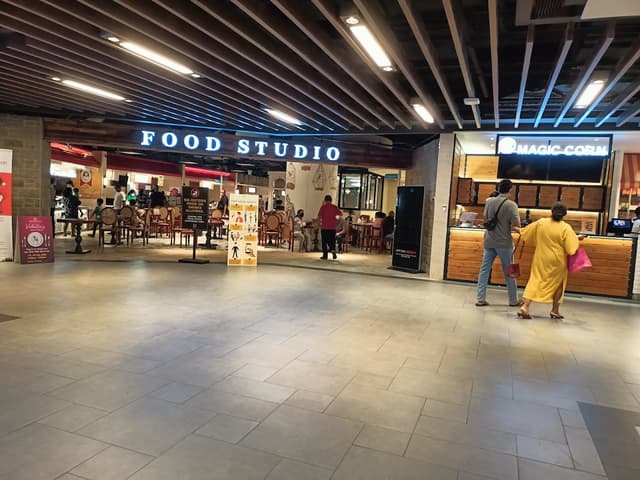
One Galle Face Mall
@ravinkavish
One Galleface is an ultra-modern mixed-use development located in the heart of Colombo, offering a blend of luxury, commerce, and entertainment. As Sri Lanka's first integrated lifestyle and business complex, it features a stunning 45-story tower that houses high-end offices, residential apartments, a luxury hotel, and a shopping mall. The development is a significant part of Colombo’s skyline, with its sleek design and prime location by the sea.
Visitors to One Galleface can enjoy a wide range of dining, shopping, and entertainment options, with a contemporary mall that houses both international and local brands. The rooftop offers breathtaking views of the Indian Ocean and Colombo’s cityscape, making it a great spot for relaxing or dining with a view.
Pro tip: Visit in the evening to enjoy the vibrant atmosphere, take in the city lights, and experience Colombo's modern side. One Galleface is ideal for travelers looking for a mix of luxury shopping, fine dining, and stunning city views.

Details
Presidential Secretariat
@ravinkavish
The **Presidential Secretariat** in Colombo is a grand colonial-era building that serves as the official office of the President of Sri Lanka. Built in **1930**, this iconic structure was originally the General Post Office during British rule. Its neoclassical architecture, characterized by towering columns and intricate details, reflects the grandeur of its historical origins.
Located near the bustling Galle Face Green, the Secretariat holds a significant place in Sri Lanka’s political history and governance. Although access to the building's interior is restricted, its striking façade and the surrounding area make it a popular spot for photography and sightseeing.
**Pro tip:** Combine your visit with a walk along Galle Face Green to enjoy the area’s historical and modern landmarks. The illuminated view of the Secretariat at night adds a touch of elegance to Colombo’s cityscape.

Details
Dutch Hospital - Shopping Precinct
@ravinkavish
The **Dutch Hospital Shopping Precinct**, located in the heart of Colombo, is a beautifully restored colonial building that dates back to the **17th century**. Originally a hospital during Dutch rule, it is considered one of the oldest surviving structures in Colombo. Its thick walls and terracotta roof tiles reflect classic Dutch colonial architecture, seamlessly blending history with modernity.
Today, the precinct is a vibrant hub of activity, housing high-end boutiques, restaurants, and cafes. It’s the perfect spot to shop for souvenirs, indulge in fine dining, or simply relax with a drink in its open-air courtyards. The atmosphere comes alive in the evenings with live music and a lively crowd.
**Pro tip:** Try the local seafood at one of the restaurants, and don’t miss exploring the nearby landmarks like the World Trade Center and Old Colombo Lighthouse. It’s an ideal mix of history, culture, and modern-day leisure.

Details
Jami Ul-Alfar Mosque
@ravinkavish
The **Jami Ul-Alfar Mosque**, also known as the **Red Mosque**, is one of Colombo’s most striking landmarks. Located in the heart of the city, near the bustling Pettah market area, this mosque was built in **1909** and is renowned for its unique and vibrant red-and-white striped exterior, which makes it instantly recognizable. Its Indo-Saracenic architectural style blends Islamic design with local influences, making it one of the most beautiful mosques in Sri Lanka.
The mosque is an active place of worship and has become a symbol of the multicultural nature of Colombo. While the mosque itself is not open to non-Muslim visitors during prayer times, its impressive architecture makes it a popular spot for photographs.
**Pro tip:** Visit the mosque during the early morning or late afternoon to capture its beauty in the soft natural light. While you're in the area, explore the nearby Pettah market for a true taste of Colombo’s vibrant street life.

Details
Gangaramaya Temple
@ravinkavish
The Gangaramaya Temple, located near Beira Lake in Colombo, is one of Sri Lanka’s most significant and vibrant Buddhist temples. Established in the late **19th century** by scholar-monk **Hikkaduwe Sri Sumangala Thero**, this temple is not just a place of worship but also a cultural and architectural gem blending traditional, Thai, Indian, and Chinese styles.
The temple complex houses a richly adorned main shrine, a museum showcasing ancient artifacts and gifts from around the world, and a library. Visitors are drawn to its serene ambiance, intricate statues of Buddha, and the sacred Bodhi tree. The temple is also the centerpiece of the annual Navam Perahera, a grand procession celebrated with elephants, dancers, and traditional music.
**Pro tip:** Dress modestly and explore both the temple and nearby Seema Malaka, a floating meditation hall on Beira Lake. It's a peaceful and spiritual escape in the heart of bustling Colombo.

Details
Gangarama Sima Malaka
@ravinkavish
The Gangaramaya Temple, located near Beira Lake in Colombo, is one of Sri Lanka’s most significant and vibrant Buddhist temples. Established in the late **19th century** by scholar-monk **Hikkaduwe Sri Sumangala Thero**, this temple is not just a place of worship but also a cultural and architectural gem blending traditional, Thai, Indian, and Chinese styles.
The temple complex houses a richly adorned main shrine, a museum showcasing ancient artifacts and gifts from around the world, and a library. Visitors are drawn to its serene ambiance, intricate statues of Buddha, and the sacred Bodhi tree. The temple is also the centerpiece of the annual Navam Perahera, a grand procession celebrated with elephants, dancers, and traditional music.
**Pro tip:** Dress modestly and explore both the temple and nearby Seema Malaka, a floating meditation hall on Beira Lake. It's a peaceful and spiritual escape in the heart of bustling Colombo.

Details
Colombo National Museum
@ravinkavish
The Colombo National Museum is a treasure trove of the island's rich history and cultural heritage. Established in **1877** by Sir William Henry Gregory, then British Governor of Ceylon, the museum is housed in a grand colonial building set amidst a lush, serene garden.
Inside, you’ll find an extensive collection of artifacts ranging from ancient Buddhist sculptures, royal regalia of Sri Lankan kings, traditional masks, and ancient manuscripts. Highlights include the **golden throne of King Wimaladharmasuriya II** and a stunning collection of Kandyan-era crafts. The museum offers an immersive journey into Sri Lanka’s past, spanning over 2,500 years.
**Pro tip:** Allocate at least a couple of hours to explore the galleries. Photography is permitted, but flash is prohibited. After your visit, relax in the museum’s beautiful garden or enjoy nearby cafés. A must-visit for history buffs and culture enthusiasts!

Details
Dawatagaha Jumma Masjid
@ravinkavish
The Dawatagaha Jumma Masjid, located in Colombo, is a historic and spiritual landmark cherished by the city’s Muslim community. Established in the early **19th century**, this mosque is renowned for its elegant white façade, striking minarets, and serene atmosphere. The mosque also holds a special place as the shrine of **Sheikh Usman Waliyullah**, a revered Sufi saint whose tomb attracts pilgrims seeking blessings and solace.
Nestled in the heart of Colombo, Dawatagaha Masjid is a symbol of the city's multicultural harmony and a peaceful retreat for travelers interested in its rich religious heritage.
**Pro tip:** Visitors are welcome, but be sure to dress modestly and respect the prayer times. The mosque’s intricate architecture and spiritual ambiance make it a unique cultural experience in Colombo.

Details
Independence Square
@ravinkavish
Independence Square in Colombo is a historically significant landmark that commemorates Sri Lanka's independence from British rule on February 4, 1948. At its heart lies the Independence Memorial Hall, a grand open pavilion inspired by traditional Kandyan architecture, symbolizing the country’s rich heritage and freedom. The hall is flanked by stone lions and surrounded by lush greenery, offering a peaceful escape within the bustling city.
The site also houses the Independence Memorial Museum, which showcases artifacts and stories from Sri Lanka’s journey to independence. It’s a favorite spot for locals and travelers alike, whether for a leisurely stroll, a jog, or simply soaking in the historical ambiance.
**Pro tip:** Visit in the early morning or evening for cooler weather and vibrant cultural events that sometimes take place here. Independence Square offers a unique mix of history, architecture, and modern-day tranquility.

Details
Colombo Town Hall
@ravinkavish
The Colombo Town Hall, built in **1928**, is one of the most iconic colonial-era landmarks in the city. Designed in a Neo-Classical style, the building features a grand white façade with towering pillars and a central dome reminiscent of Washington, D.C.’s Capitol building. It was originally constructed to house the administrative offices of the Colombo Municipal Council and still serves that purpose today.
Set amidst the lush greenery of **Viharamahadevi Park**, the Town Hall is a favorite spot for photography and sightseeing. Though the building itself is not open for tours, its majestic exterior and surroundings make it a must-see while exploring Colombo.
**Pro tip:** Visit during the evening when the building is beautifully illuminated. Pair it with a walk through Viharamahadevi Park for a relaxing escape from the city’s hustle and bustle.

Details
Colombo Lotus Tower
@ravinkavish
The Colombo Lotus Tower, or **Nelum Kuluna**, is Sri Lanka’s tallest and most striking landmark, standing at **356 meters**. Officially opened in **2019**, this architectural marvel symbolizes the country’s growth and progress. Designed to resemble a blooming lotus, the tower’s shape reflects Sri Lanka's cultural heritage, as the lotus is a sacred symbol in local traditions.
The tower features an observation deck offering **360-degree panoramic views** of Colombo and beyond, making it a favorite spot for photography and sightseeing. Inside, you'll find a range of attractions, including a revolving restaurant, exhibition spaces, and shops.
**Pro tip:** Visit during the late afternoon to catch the sunset, and stay until evening to see the tower illuminated in vibrant colors, creating a dazzling spectacle. It’s a must-visit for anyone exploring Colombo’s modern skyline!

Details
Getting Around Sri Lanka by Train and Bus
Navigate Sri Lanka with ease using my ultimate travel map! This guide includes detailed information about bus stops, train stations, and the best routes to explore iconic landmarks and hidden gems. Save time, money, and hassle while discovering unique insights that no one has shared before. Whether you're planning to hop on public transport or explore independently, this map is your ticket to a seamless and unforgettable adventure across Sri Lanka!
The END or NOT!?
COME BACK AGAIN!
* * *
